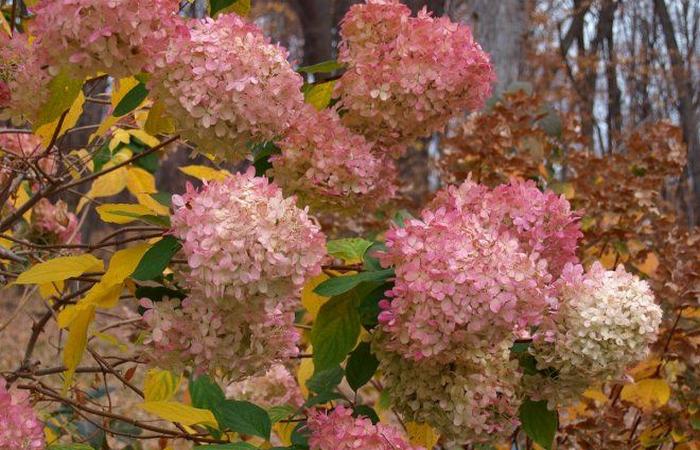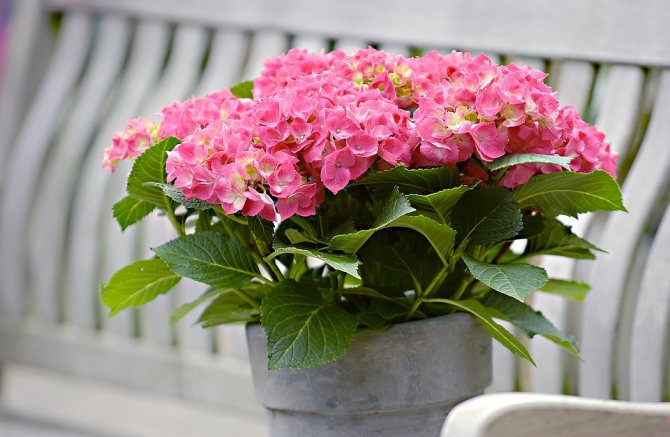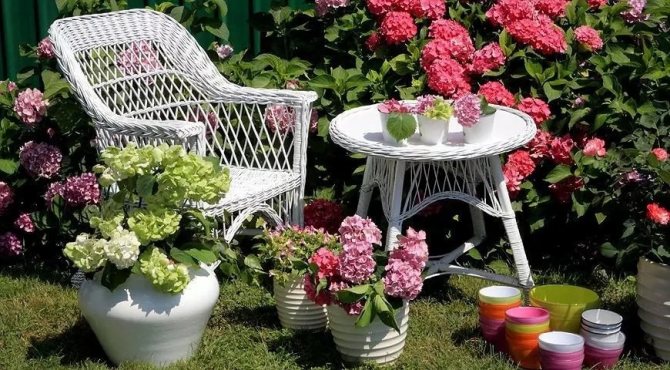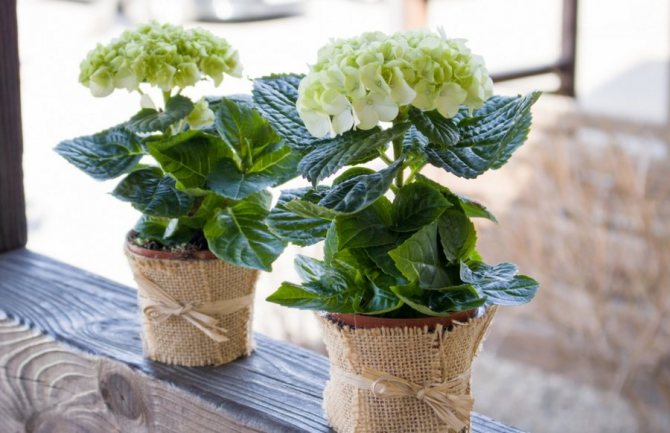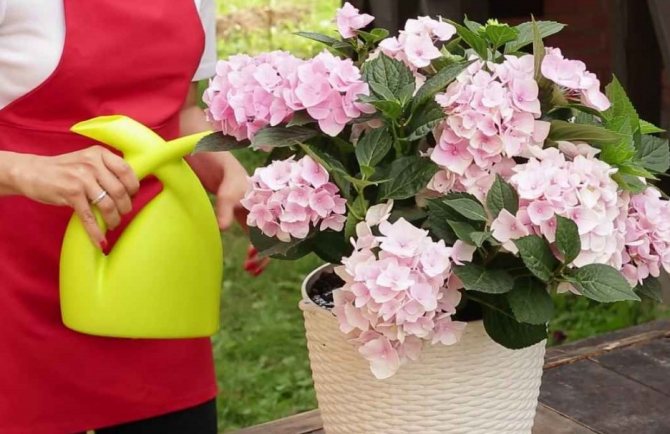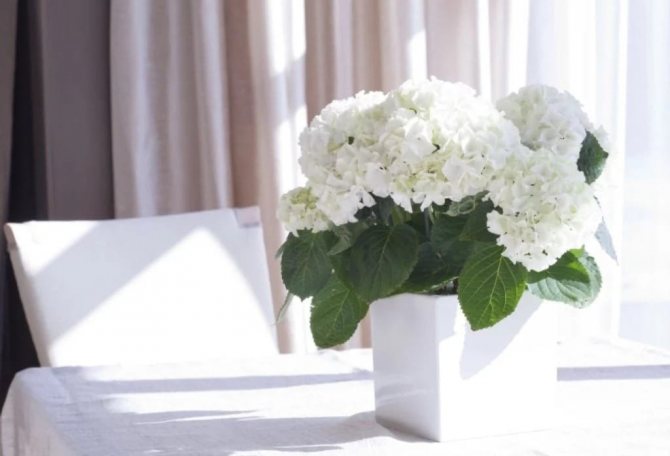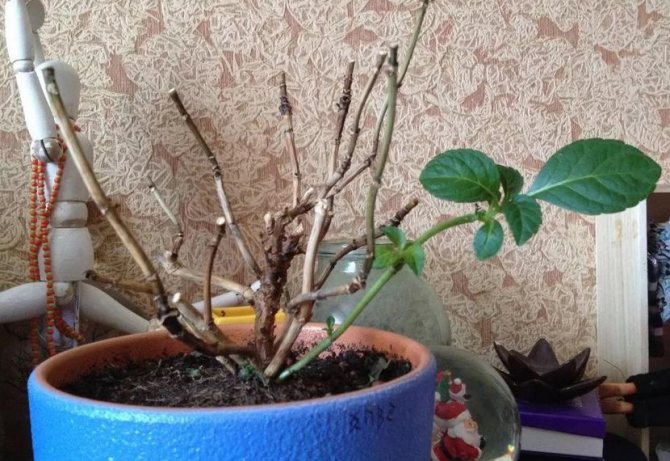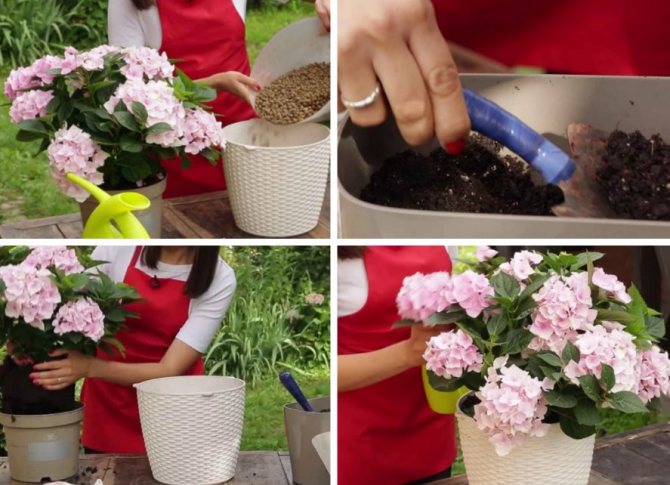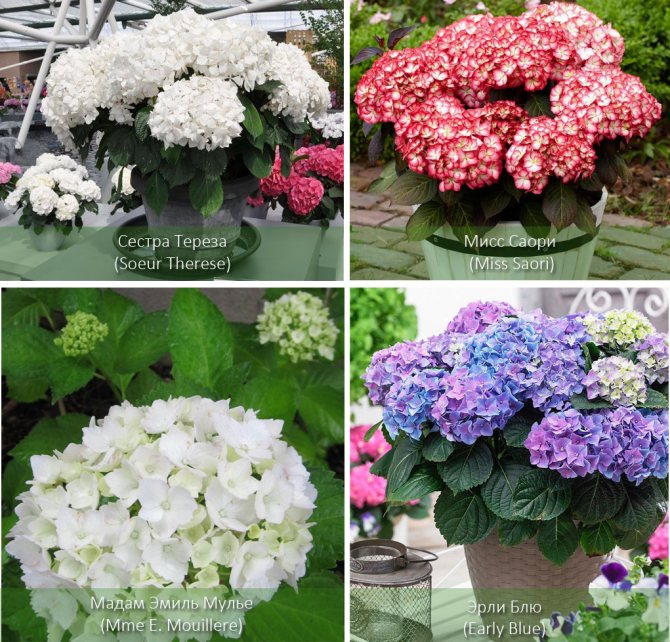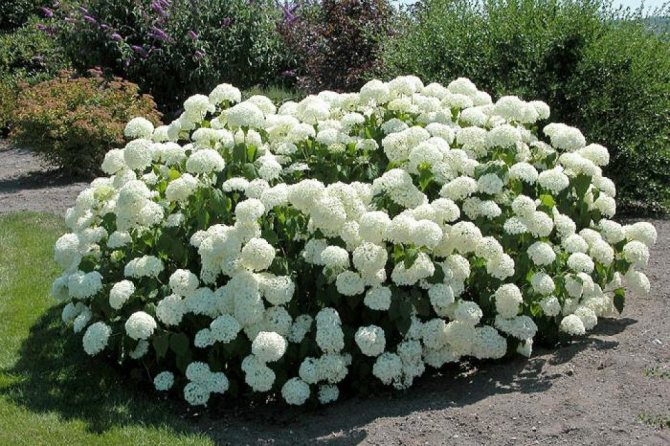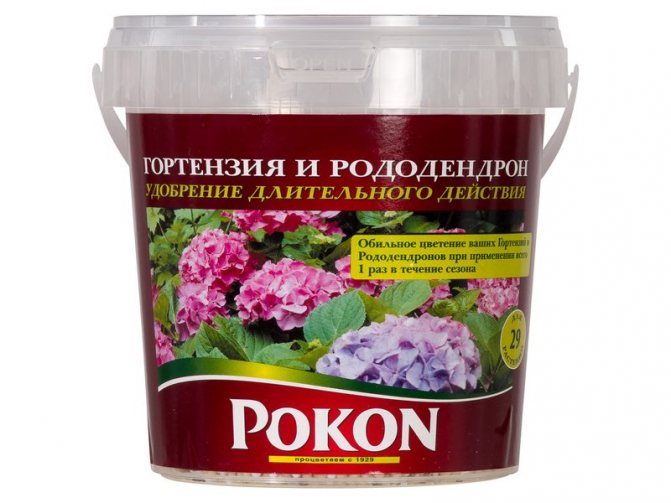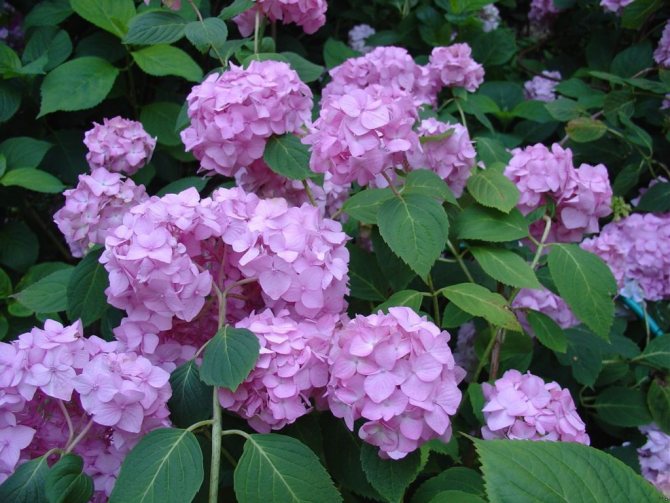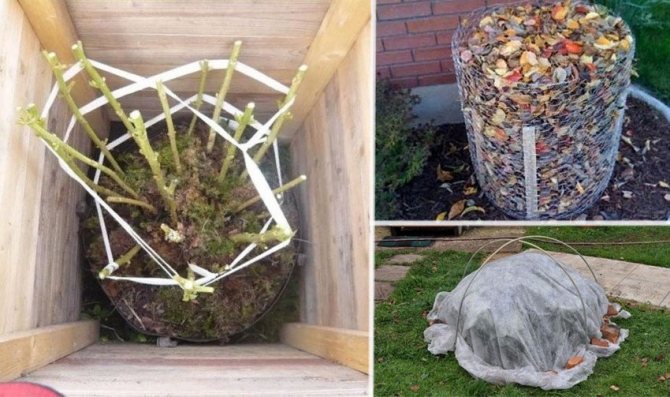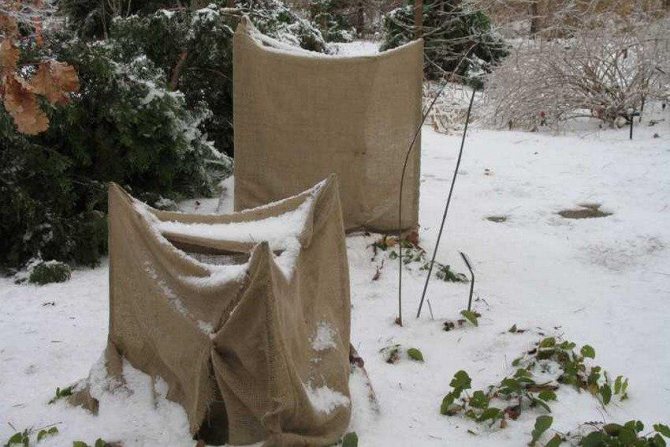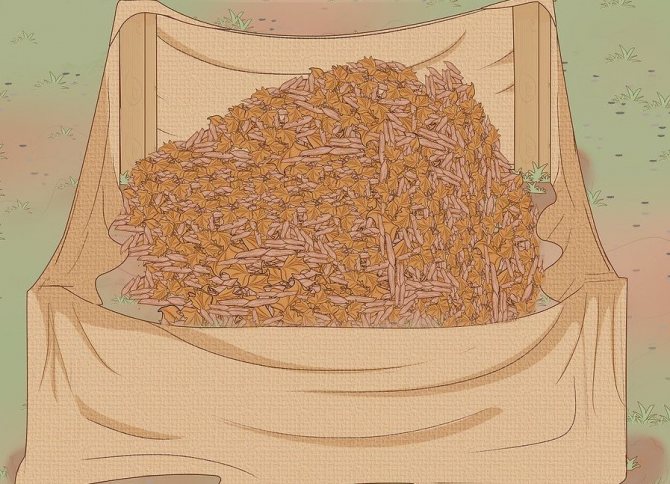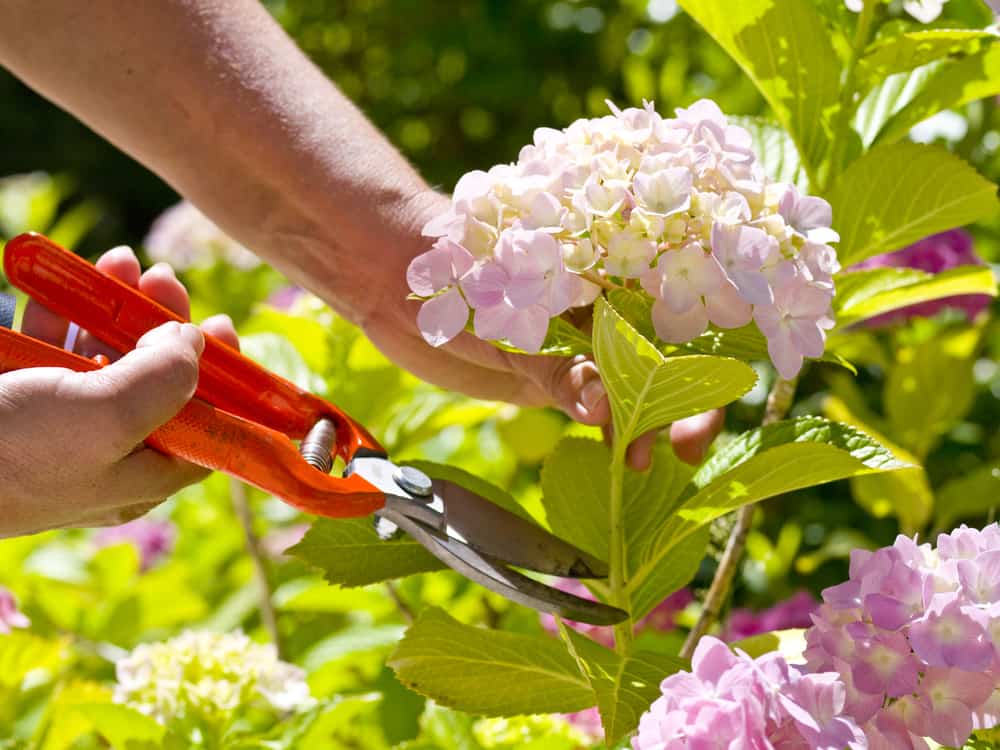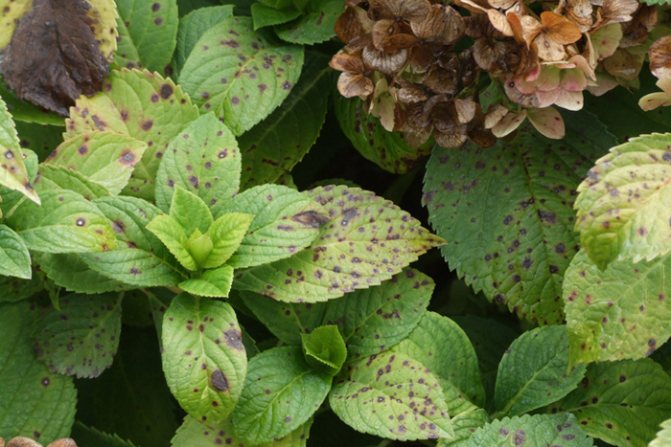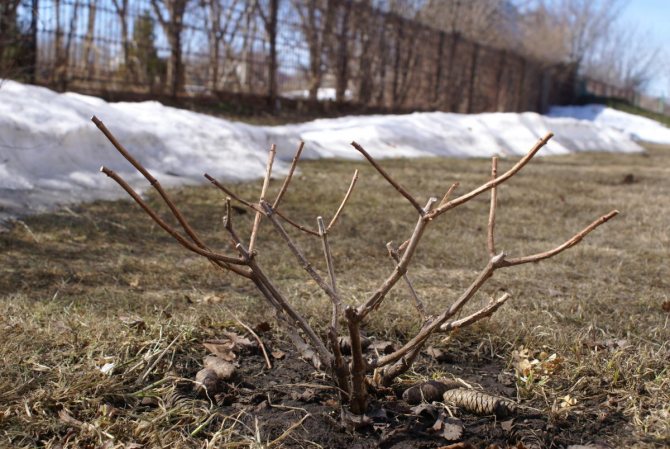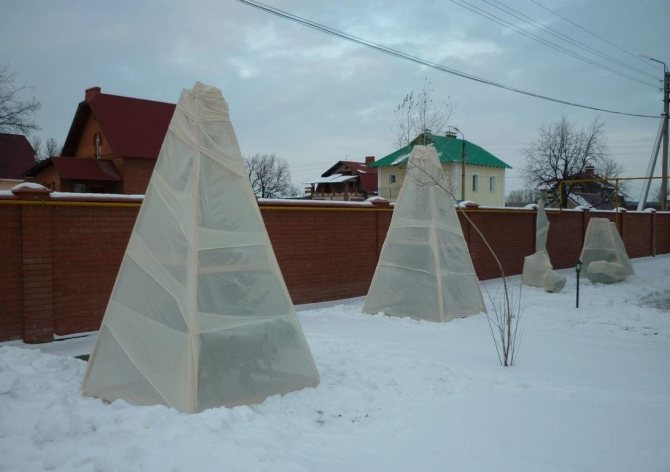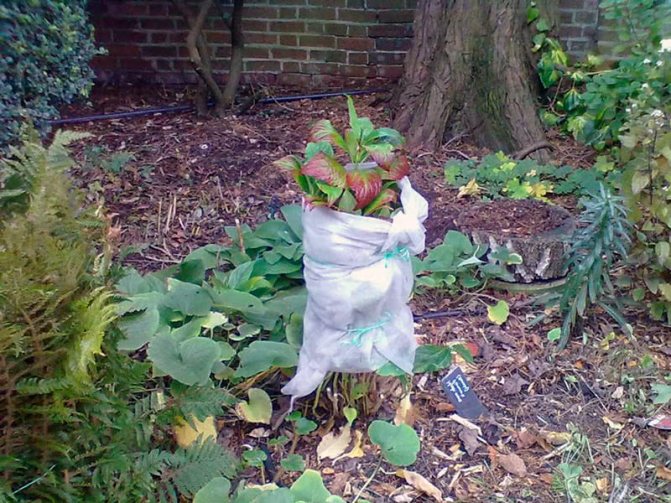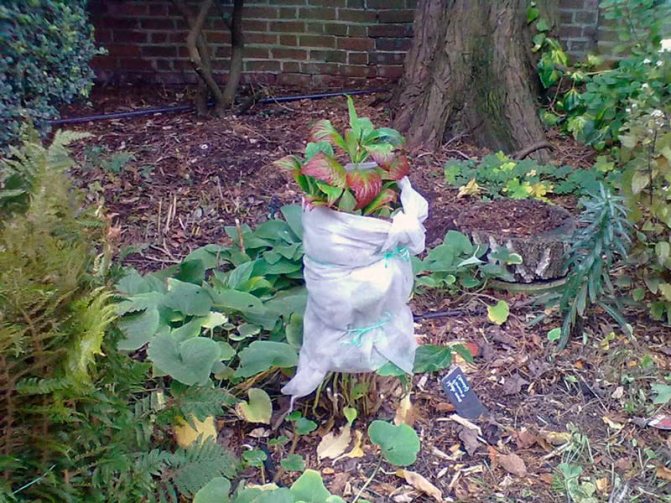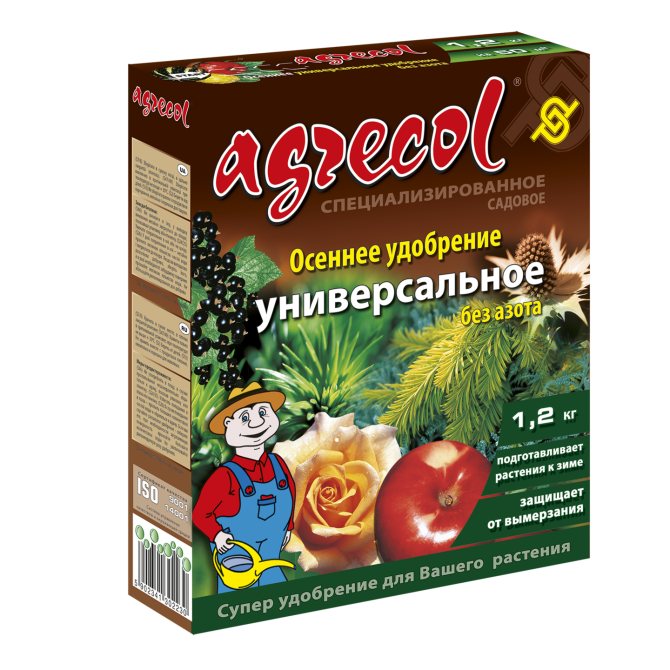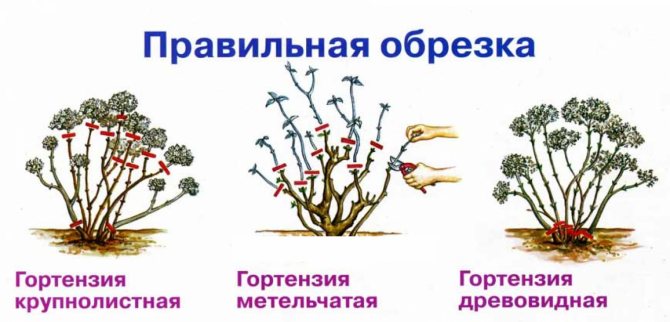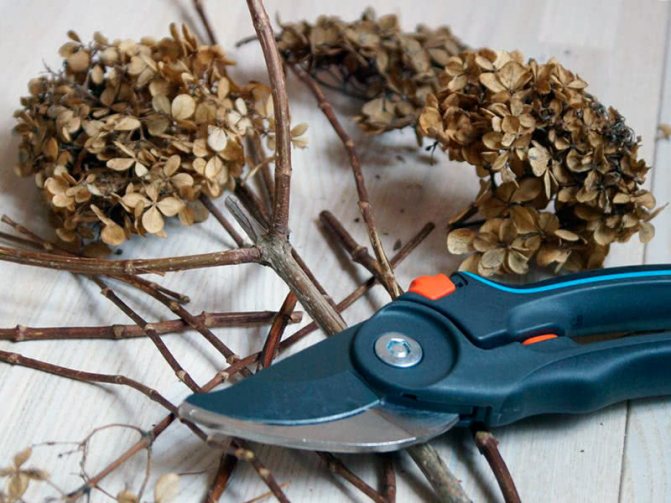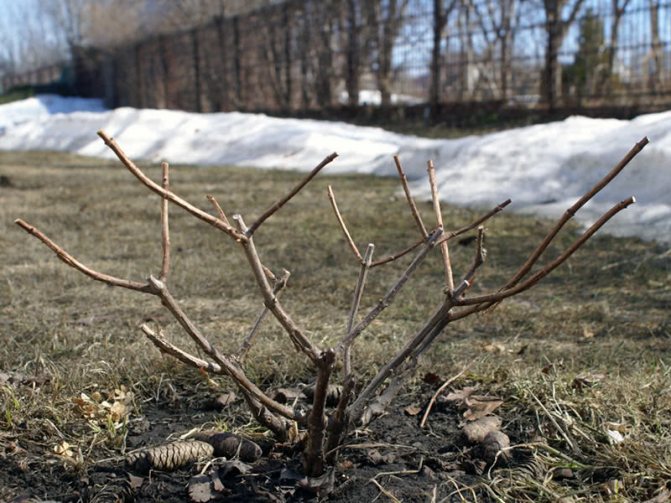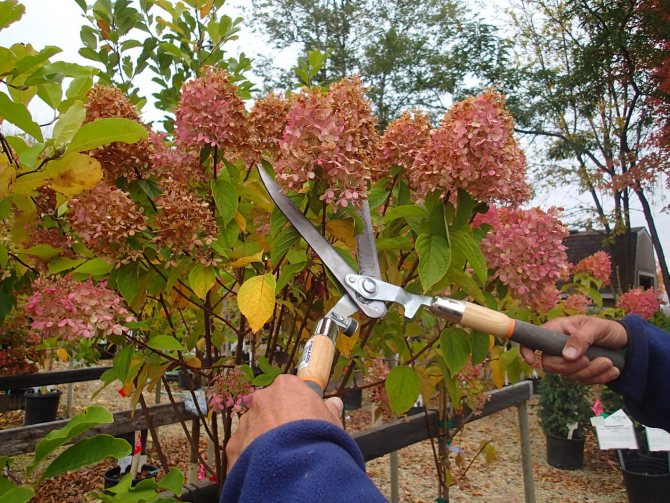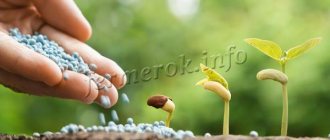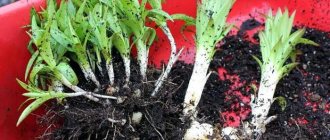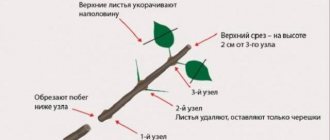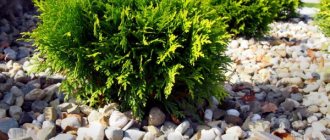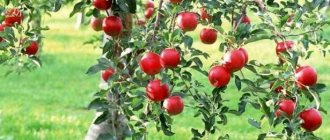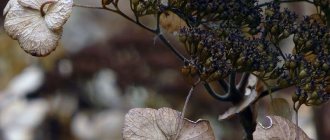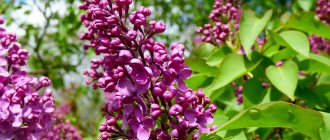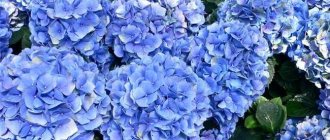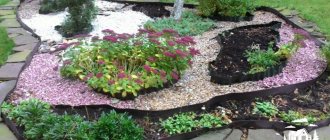During the flowering period, the hydrangea looks like a majestic queen in bright, festive attire. Not every gardener can grow this splendor on his site, because she is famous for being fastidious in cultivation and care. And often from such seemingly simple nuances as the proper care of hydrangea in the fall, depends not only on its violent flowering, but also on the safety of the bushes. And sometimes it is a pity for their labors and efforts, when, when spring comes, the hydrangea bushes begin to rot or even die. To prevent this from happening with such beautiful plants, you need to know and apply in practice the simple rules for caring for hydrangea in the autumn.
Before tending your hydrangea
You need to know that the plant needs a shaded area. Her peduncles delight the eye longer when she is in the shade. Therefore, it is worth planting it immediately in a place where it will grow constantly, since the plant does not like frequent transplants. The root system of a hydrangea is superficial - it develops horizontally - and the damaged main root does not recover well after being transferred to another place.
Shading helps to retain moisture - this is the only condition under which the hydrangea will bloom in full. No wonder the Greeks gave it the name Hydrangea, which means water lover.
For frosty winters, you need to choose deciduous varieties - for example, tree or paniculate. Evergreen species will freeze - they are cultivated only in southern countries, where the weather is always warm.
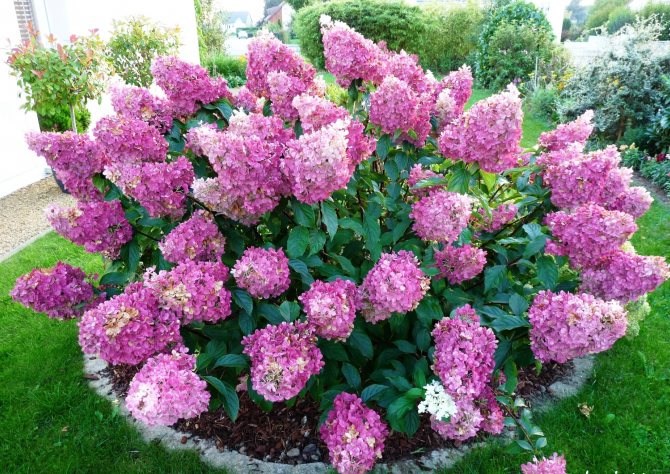
Creating the best conditions for the hydrangea dormant period
The next step is to create for the plant optimal conditions for a dormant period. This period for hydrangeas, as a rule, falls in the winter, as in natural conditions. At this time, it is taken out to a cool, dry, dark place (basement, storage room, glazed loggia), where it is kept at a temperature of no more +12 degrees, but not less +5.
The rest period lasts up to 80 days, at this time, watering is reduced, while not allowing the soil to dry out strongly.
Winter care for room hydrangea, after the required period of time, begins at January - Februarywhen the plant is transferred to a warmer room. At first the flower is about 10-14 days contain at temperature +10-12 degrees, after - gradually increasing it and increasing watering.
Transplanting young hydrangeas - fall or spring
Since the plant does not like the process of transferring from a pot to open ground, it needs more time to root and gain strength before wintering. In warm regions, seedlings can be transferred to the soil in the fall. But in areas with a harsh climate, it is better to replant the hydrangea in the spring so that the plant takes root.
You should be prepared for the flower to not bloom for a couple of years. It is possible to stimulate the process of peduncle formation with mineral mixtures. If the plant likes the complex of fertilizers and watering is regular, it will bloom next year.
Loamy soils are most suitable for garden hydrangeas. In order to increase air permeability, sand is added to the soil. This must be done even during planting, because later you will have to injure the root when adding sand around the bush.
When transplanting, the distance between the bushes must be observed so that there is no thickening - up to 1.5 m.The hydrangea hole is made 50 cm wide and deep.
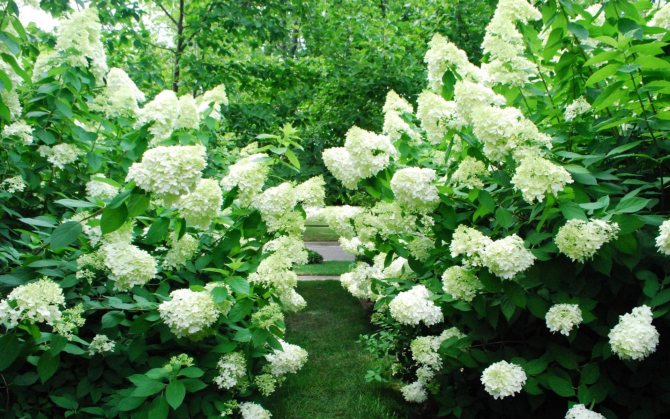

Before planting, complex mineral fertilizers are applied - potassium sulfate, urea and superphosphate in proportions of 20g: 20g: 60g. Urea is needed for a quick set of green mass, phosphorus - to support the root system, potassium - for setting flower stalks. Water liberally after planting.
An adult bush needs 50 liters of water twice a week, young ones - 30 liters. In rainy weather, watering is carried out once a week.
Transfer
It is produced either after the end of flowering, or in early spring - before the beginning of the next.
The pot must be taken large enough so that the plant is not cramped and there is room for further growth. Since the roots grow predominantly in width, it must also be wide.
When planting, do not cover with earth root collar flower, it is left at the level of the soil surface. The hydrangea loves sour soil.
Do you know how fun croton breeding can be? Read about it with us.
Monstera can be propagated by cuttings and in various other ways, which we are talking about in this article.
The ideal option is mixture:
- coniferous land (1 part);
- peat (1 part);
- sand with the addition of humus (0.5 parts).
The soil can be prepared by yourself or bought ready-made in the store. The surface is advised to be mulched with peat in order to avoid drying out the top layer too quickly.
Be sure to do drainage at the bottom of the pot, using clay shards, expanded clay or pebbles for this. It is advisable to treat the root system with a solution for faster root formation before planting (for example, Kornevin).
After transplanting, water the plant abundantly and spray with a spray bottle.
Top dressing in spring and summer
In early spring, the plant is fertilized with complex mixtures. How to feed a hydrangea to bloom until autumn:
- urea - helps to gain green mass and protects against diseases;
- potassium sulfate - promotes the laying of flower stalks;
- superphosphate - ensures the formation of a powerful root system that is not able to get nutrients from deep horizons;
- trace elements - increase the immunity of the plant.
Aluminum salts, which are applied every two weeks, contribute to the formation of the color. The more acidic the soil, the darker the peduncle.
Periodically, potassium is added under the hydrangea in the summer. This prolongs flowering and also contributes to the long-term preservation of cut plants.
How to fertilize hydrangeas so that they bloom in different shades
To obtain colored flower compositions, sulfur and aluminum salts are used - most often sulfates. In the presence of phosphorus in the soil, aluminum is in a bound form and is inaccessible to plants. It is worth adding brown peat, sawdust or spruce needles, as the acidity rises and the aluminum dissolves, which makes it possible for its absorption by the roots. The pH level should not be higher than 5.5.
Video: Feeding hydrangeas - tips for gardeners
Pink peduncles are obtained at a soil pH above 6.5. For lifting, use chalk, dolomite flour. The acidity must be monitored constantly, since when the increase exceeds 6.5, chlorosis of the leaves begins.
Varieties of indoor hydrangea
Large-leaved hydrangea has many varieties. The most common ones are divided by color:
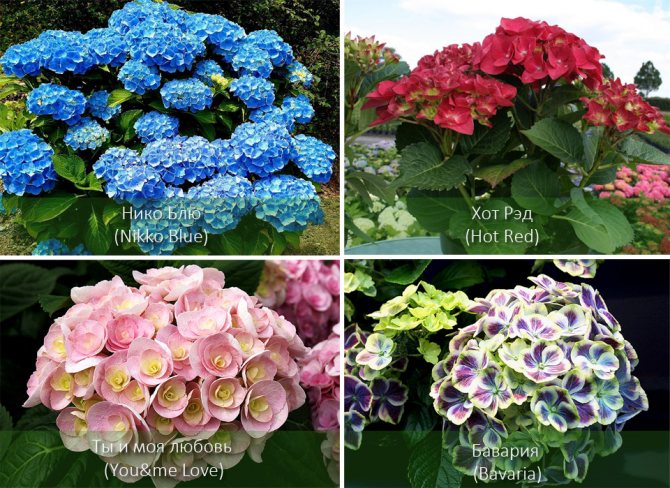

| Colors | Variety | Description | Inflorescences Flowering features |
| Light shades | Sister Teresa (Soeur Therese) | The bush is quite dense and large-leaved. | Painted white with a slightly pinkish-lilac sheen about 30 cm. Abundant, lasts until September. When withering, the inflorescences change their color and become greenish-pink. |
| Mme E. Mouillere | Compared to various other varieties, the leaf plates are narrower. | 20 cm and the color is white. At first they are white, but then they become slightly pinkish, bluish. Flowering is numerous and lasts until October. | |
| Blue | Earley Blue (Early Blue) | The shrub is small, but its root system is quite strong. | Reaches 30 cm. Their color is blue, as well as blue and purple shades. Slightly greenish at first. Abundant and lasts until October. |
| Nikko Blue | For vivid colors, it is necessary to maintain the acidity of the soil at 5.5-7.0 pH. The bush will grow quickly enough. | About 30 cm. The color of the flowers is bright blue. Very abundant until September or October. | |
| Pink | Ramars Mars | The size of the bush is not very large. | Painted in a pinkish-crimson shade, and edged with white at the edges. 30 cm despite the small size of the bush. Lasts until September. |
| Miss Saori | The leaf plates are dark green in color and have a slight purple tint. | 18 cm. Snow-white, framed with a pinkish border. Soil condition does not affect color. This variety blooms until September. | |
| You & me Love | Reaches 100 cm in height. The leaves are resistant to powdery mildew disease. Withstands temperatures of +29 ° C. | If the soil is alkaline, then the color will be pink, and if it is acidic and with a lot of aluminum, then the color will be blue. It starts in May and ends in September. | |
| Red | Admiration | The crown of the bush is rather dense. | 20 cm, bright red. Abundant, up to the first frost. |
| Multicolor | Bavaria | Compact, small in size. | 20 cm have a lime color, the middle with a bluish-purple tint. Rich until mid-autumn. |
| Hot Red | A bush with small inflorescences, very lush. | 15 cm. Scarlet, but if there is a strong increase in the acidity of the soil, then they acquire a purple color. Lasts until October. | |
| Schloss Wackerbarth | Flowers of this variety have light stamens. | They can reach 30 cm in size. At the very beginning of flowering, their color is green, and then it becomes pink, a blue center and a green edging appear. Until October, sometimes until early November. |
Panicle hydrangea
Top dressing of paniculate or tree-like hydrangeas in summer can be carried out with organic long-playing fertilizers - ash or bone meal. These substances contain a lot of phosphorus, and there is also potassium in the furnace ash.
Once every 2 - 3 years, you can lay in the ground under the bushes extracts from ash and bone meal and not think about how to feed the hydrangea for lush flowering. Substances decompose for a long time in the soil and provide food all year round. In the spring, it will be enough to water it with nitrogen fertilizer, and the plant will feel good.
How to feed panicle hydrangea for abundant flowering in July:
- Potash fertilizers come to the fore. They prolong the flowering of existing peduncles and stimulate the formation of new ones.
- In July, nitrogen fertilizing is introduced in the form of watering with urea so that the leaves do not fade ahead of time.
It is imperative to feed the hydrangea during flowering, because it is during this period that the root system takes nutrients from the soil and accumulates them in the tissues of the plant, which seeks to form seeds and multiply.
Closer to autumn, in August, panicle hydrangea is fed with potassium-phosphorus fertilizers. The goal is to help the plant overwinter successfully, which is only possible with a protected root system. Autumn nutrient applications ensure that vegetative buds are set for the next season. If there are few potash or phosphorus elements in the soil, there will be fewer peduncles next year.
In September, green mass growth stimulants are not used to feed hydrangeas, but you can sprinkle the soil around the bushes with ash. Organics take longer to decompose and by the spring the root system will have something to profit from.
Growing features
Interestingly, the shade of the inflorescences can be adjusted independently by adding certain fertilizers to the soil. On neutral soil, the flowers will have a beige or cream shade. A soil with a high alkali content gives flowers a pink or lilac color, acids - a blue one.
Bright lighting is very important for the shrub, but the scorching rays of the sun are destructive for it, as well as deep shadow. Therefore, it is best to plant a flower where there is shade at lunchtime, and the rest of the time - the sun.
It is important not to overfeed the seedlings with organic matter. They will grow green mass, but are unlikely to bloom.
The difference in feeding different types
In order for hydrangea to annually please with beautiful caps of lush inflorescences, it is necessary to take into account the needs for fertilizers of different types and varieties. There are some nuances of flower feeding that gardeners note.
How to feed a hydrangea tree in autumn
Treelike hydrangea is one of the most frost-resistant varieties. Some varieties can withstand temperatures as low as -20-30 ° C. In addition to the basic elements, it needs magnesium and iron. In the autumn, it responds well to soil mulching with humus and peat. To give the shoots density, it is recommended to spill the soil with a weak solution of potassium permanganate.
How to feed large-leaved hydrangea in autumn
There are many varieties with a variety of colors of large-leaved species. The color of the petals directly depends on the composition of the soil.
When choosing a fertilizer for autumn feeding hydrangeas, the influence of elements on this parameter should be taken into account.
- Blue and blue varieties need acidic soil and moderate amounts of phosphorus. In autumn, they are fed with a liquid solution based on potassium sulfate and ammonium sulfate. It is recommended to use pine needles and sour peat as mulch.
- Pink inflorescences require a high phosphorus content. From ready-made preparations, you can use Agricola 2. Wood ash or dolomite flour is chosen for organic feeding.
- Red and white varieties can be fertilized in the fall with superphosphate or complex mineral mixtures.
To maintain the required level of acidity, gardeners sometimes resort to folk remedies. Saturated blue shades of inflorescences are obtained by watering hydrangeas with acidified water. 60 g of lemons or 100 ml of table vinegar are diluted in 10 liters of water. The resulting solution is poured into the soil around the bushes.
Good to know! In flower shops, you can buy ready-made preparations designed specifically for blue hydrangea varieties.
Pruning and feeding panicle hydrangea
In the fall, the bushes are subjected to sanitary and formative pruning. The main task is to remove old, damaged branches and shoots growing inside the crown. In addition, all leaves are cut off. After the procedure, it is impossible to make mineral and organic dressings for 2 weeks.
Before sheltering for the winter, be sure to mulch the soil around the trunk with humus, sawdust or spruce branches. The root system of the species is located close to the surface of the earth. For successful wintering, she needs additional protection. The rules for feeding paniculate hydrangea for color are the same as for large-leaved varieties.
Types and varieties of room hydrangea
Hydrangea is a plant whose height reaches one and a half meters. Belongs to the type of dwarf shrubs. Has spreading leaves. They have small notches along the very edge. Differs in very large inflorescences that reach up to 30 cm in length.
The cultivars were bred to create a large palette of colors. Consider the most common for home floriculture.
- Tree-like. A shrub with a height of 3 meters. The leaves are large, fleshy. Bright green hue. Flowers form a spherical sphere and reach a diameter of 25 cm. Flowers, most often, are painted in a milky or beige shade.One of the most unpretentious varieties.
- Large-leaved. The length reaches 2 meters. Suitable for both home cultivation and greenhouse cultivation. The leaves are large enough. The shoots are always light green. The variety is resistant to cold weather, so even in the winter season it feels great on a cold window.
- Paniculata. It looks like a large, spreading shrub or small tree. The height reaches 6 meters. The leaves are elongated. And the shoots turn brown with age. The plant is resistant to cold weather. The inflorescences gradually form a small pyramid. They have shades from milky to blue. By autumn, the flowers acquire a reddish or even brown tint.
Flowers also differ in color, which is inherent in them during flowering. There are varieties:
- red sensation;
- Еarly Blue;
- Europe;
- star;
- linear and so on.
However, the color of the inflorescences is influenced not only by the variety, but also by the composition of the soil. For example, if it is acidic, then a blue tint appears in the flowers. If more alkaline, then a pink or red pigment. If the soil is neutral, then you will get boiling white flowers with milky blotches.
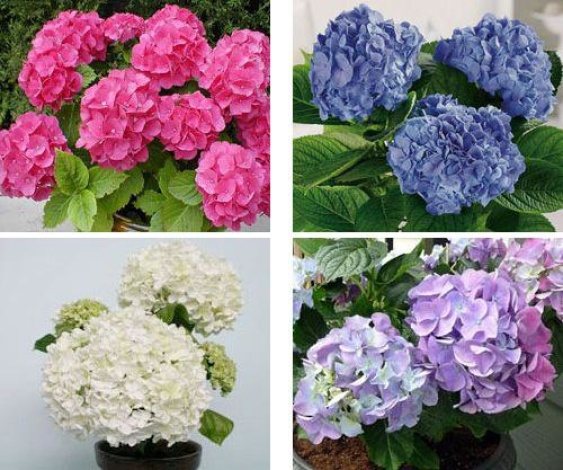

Features of autumn feeding before shelter for the winter
During the entire growing season, hydrangea forms a powerful spreading bush with an abundance of large flowers. Flowering lasts for 2.5-3 months (depending on the growing climate, the warmer - the longer) from late May to late August. It is not surprising that during this time the plant is greatly depleted, giving all its strength. Therefore, no matter how careful the care is in the summer, autumn feeding is necessary. Autumn work is carried out to prepare the plant for winter before sheltering.
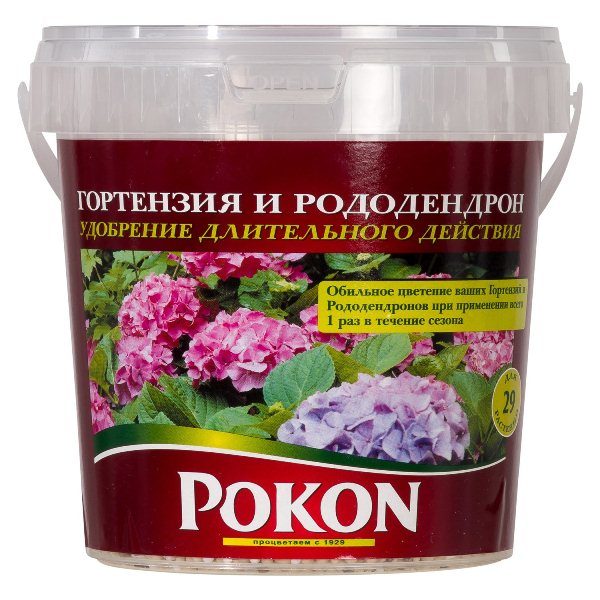

Top dressing is the main type of work for the care of lush-flowering shrubs
Since this flower is thermophilic, nutritious fertilizer mixtures will strengthen the root system, newly appeared eyes, and help the plant overcome the winter cold. Autumn feeding with organic and mineral fertilizers is the key to good development and abundant flowering next year.
Hydrangea is a moisture-loving plant and in the fall it also needs abundant watering, loosening the soil around the bush and protection from diseases.
Description of the plant
Home hydrangea is a perennial shrub with large and jagged ovoid leaves. Its inflorescence-balls are also large, reaching a diameter of 35 cm, and they consist of two types of flowers: large at the edges of the inflorescence and small in its middle.
Depending on the pH of the soil, the color of the inflorescences also changes: if the soil is acidic, then they acquire a blue tint, alkaline - pink or lilac, neutral - cream or white. The fruit of a hydrangea is a polyspermous capsule. At home, it can reach a height of about one meter.
Feeding rules after circumcision
After pruning (only the bush form of hydrangea is needed), feeding is not carried out, since at this moment the plant is already in a state of deep dormancy. In order to protect the hydrangea from freezing, it is necessary to cover it with humus. This action can be called relative feeding, since a shrub or tree will receive useful substances from humus only after the resumption of metabolic processes.
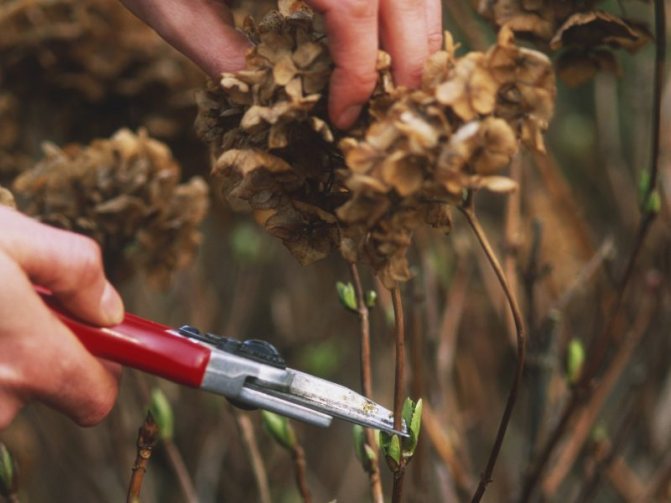

Pruning hydrangeas ends the season and winter preparation. In order for the process not to take away strength, it is possible to carry it out only after the onset of a period of rest.
If, in the spring, before the beginning of the opening of the buds, a sanitary haircut was carried out, then it will be necessary to feed the hydrangea after pruning with a nitrogen composition and organic fertilizer.
How to care for in winter?
Indoor hydrangea is deciduous plant, therefore, it is characterized by the dropping of leaves before the period of its dormancy. This phenomenon occurs once a year, before the onset of severe cold weather.
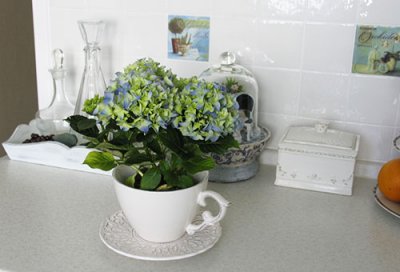

In order for her to safely survive the hibernation regime and thank her owners next year with abundant and long flowering, she needs to provide a number of prerequisites.
Preparation for winter should be started already in the fall. It includes making some changes to the care of the plant.
Before the onset of the cold time at a gradual pace shrinks the intensity of watering the hydrangea, feeding stops.
Dormant period
The dormant period begins shortly after the end of flowering and lasts approximately 2-3 months. When the hydrangea has faded, the plant is pruned and moved to a cool, dry place.
Light mode
She is not picky about light. Important: this plant is sensitive to direct sunlight, so this factor must be eliminated immediately.
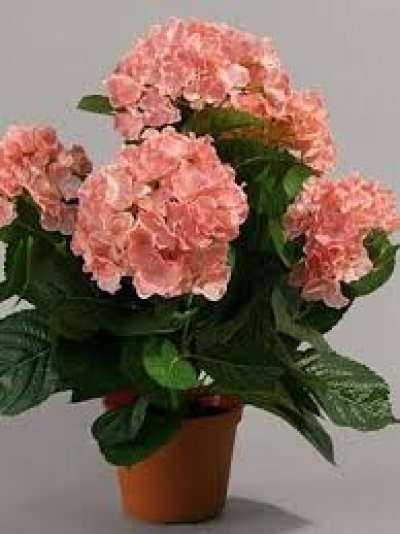

Hydrangea can grow well in partial shade, and in the winter season slight blackout she just necessary for a good rest and a set of strength for the upcoming flowering. In rest mode, the illumination for this flower is not significant.
Temperature regime
Indoor hydrangea prefers cool... If in the warm season it is recommended to keep it at a temperature from +15 to +22 degrees, and at the same time protect from sudden changes in temperature and drafts, then in winter it will feel great at 5-9 degrees with a plus sign.
The optimal place for keeping in winter is dry and ventilated basements and semi-basements.
It is recommended to transfer the hydrangea to an apartment or house, to its usual place in late winter or early spring (February-March), when the plant begins to germinate kidneys.
Watering
As noted above, preparing hydrangeas for wintering begins with a reduction in watering. During hibernation should receive minimum moisture... The plant should be watered occasionally, and then only in order to prevent the earthen mixture in the pot from drying out.
If it is moved to the basement for the winter, its need for moisture is significantly reduced, so watering at this time is possible at all to terminate.
Recommendations for preparing hydrangeas for winter
There are some tips to help you prepare your plant for the cold season. Some ways to prepare for winter:
- Bending the branches to the ground: first, they make a bedding over the roots under the bush, then the branches are bent and fixed to the ground. Agrofibre is pulled from above. There can be several layers of special covering material. It all depends on the level of temperature drop.
- Linking branches. The bush is collected in a dense bunch and wrapped with agro cloth. Then a wooden frame is created, which is filled with foliage or needles. The frame cover is made of moisture-proof material.
- Air dry method. This technology is one of the newest. The bush is covered with a frame. Tighten from above with agrofibre in several layers, then with a film. The lower layer of agrofibre is made weak in tension, and the upper layer is tight. An air gap is created that retains a comfortable microclimate and warmth.
Growing walnuts in Siberia
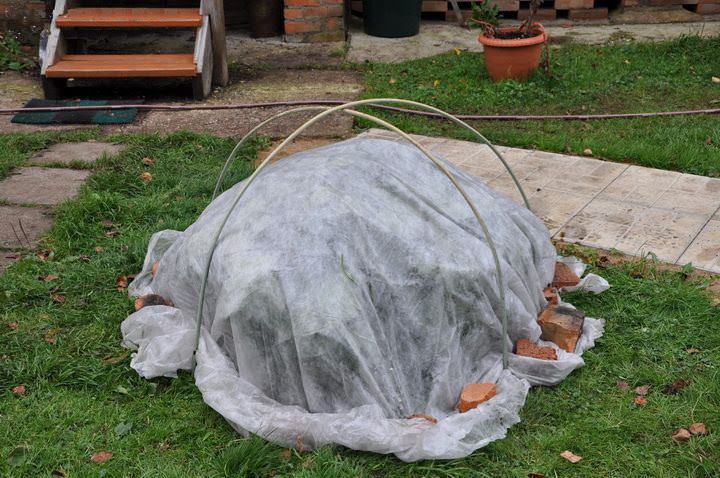

Digging and mulching the soil
Digging the land for the winter should be carried out carefully. Do not damage the root system, any careless action will damage the bush. It will be quite difficult for such a plant to overwinter. Tired of summer labor - flowering, it is already weakened, and spoiled roots are almost a disease that is very difficult to survive in winter. Digging to a depth of 3-5 cm, it looks more like loosening, and not digging. Then mulching is carried out:
- prepare mulch;
- add sawdust to it;
- laid out on the surface of the soil around the stem;
- the layer of mulch should be at least 5 cm.
Planting a room hydrangea
Indoor hydrangea usually lives for about four years.
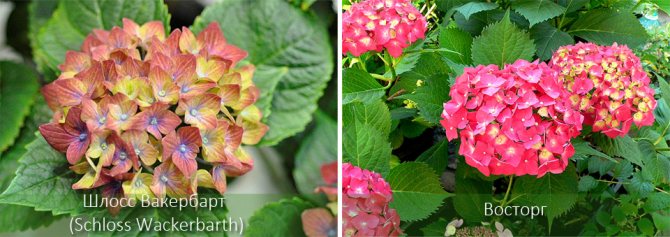

In addition, it should be replanted annually, because it grows and requires more space for itself.The pot should not be too deep for this. The main thing is that it is wide, due to the fact that the roots of this flower grow in breadth. Each new container should be approximately 1.5 times larger than the previous one.
A large and beautiful hydrangea can be obtained by growing it in a suitable soil, taken in a ratio (0.5: 1: 1: 2):
- sand;
- peat;
- leafy ground;
- turf.
Compost cannot be added because it negatively affects the root system of the flower.
Indoor hydrangea undergoes transplant stress, which has a negative effect on its development in the future. To help you get through this event as best you can, you need to use the transshipment method. Adequate drainage must be placed on the bottom of the pot in which the plant will be placed. After that, place the flower in a flowerpot and then fill all the free space with fresh substrate. It should turn out that the root collar of the hydrangea will be flush with the surface of the soil.
After that, it is necessary to moisten the soil and pour a little peat mulch on top. This helps to maintain sufficient moisture in the soil.
Types of fertilizers and rules for their application
Mineral and organic fertilizers are used for hydrangeas. In order for it to bloom well for the next season, it is important to be able to correctly combine both types of fertilizers in the fall. It is more convenient to immediately purchase complex formulations for hydrangeas, which allow you to accurately, if you follow the instructions, feed the plant and provide it with all the necessary substances.
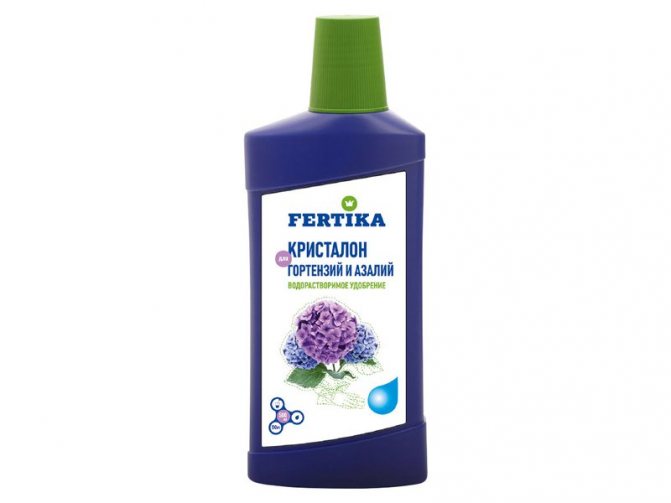

The most popular are the following mineral complex preparations for hydrangea:
- Fertika. For hydrangea, you need a product in liquid form. It is applied throughout the growing season, including in the fall;
- Pokon is a long-lasting fertilizer that saturates the hydrangea with essential nutrients and maintains the good condition of the plant for a long time. The granules, mixed with the soil, are scattered around the bush, and then watered abundantly. Under the influence of water, the granules gradually dissolve and saturate the soil with mineral substances;
- GreenWorld - used for autumn feeding strictly according to the instructions. It is good to combine the product with organic matter in one top dressing.
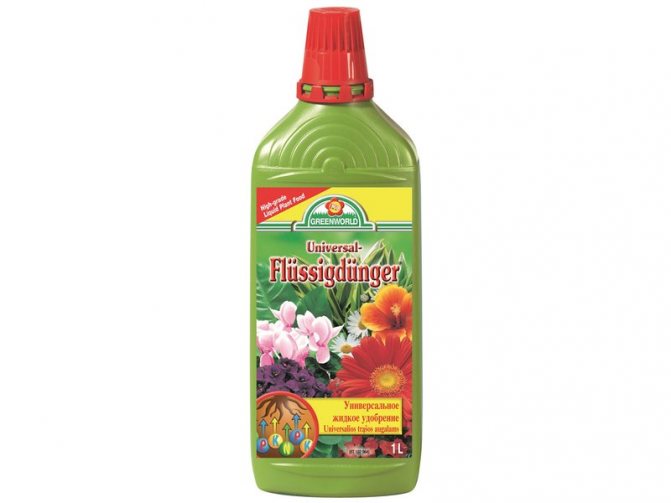

In the event that it is not possible to purchase special products for hydrangea, you can use wood ash, superphosphate, urea and potassium sulfate.
Organic matter for hydrangea is necessary so that it accumulates nutrients, due to which it will survive the winter, when, despite the dormant period, the metabolic processes in the plant still go on, just very slowly and mainly in the roots.
Organic fertilizers include:
- vegetable infusion (nettle fertilizer, sorrel infusion);
- mullein;
- horse dung;
- bird droppings;
- liquid biohumus;
- humus.
It is best to apply under the hydrangea when preparing it for the winter with humus. It will warm the roots and prevent them from freezing, and by spring, when the process of decomposition of humus is completely over, the soil will be enriched with nitrogen, which is necessary at the time of active growth of plants.
If manure or dung is used, then they are dissolved in a ratio of 1:10. The mixture should be applied at the root in a circle. Higher concentration is unacceptable, as this will burn the plant.
How to keep in a pot until spring?
Caring for a flower in a pot consists of the following points:
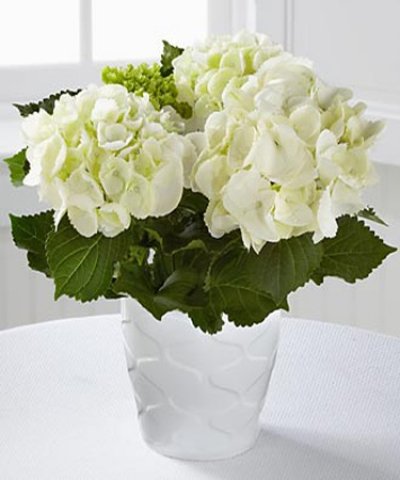

- carrying out all the manipulations preceding the dormant period (gradual preparation of the plant, pruning and, if necessary, transplanting);
- compliance with all the conditions necessary for the plant during hibernation.
She just needs dark and cold wintering... During this time, she manages to recover and gain new strength for the appearance of future flowers.If this condition is not met, the plant will be able to please the owners with its next flowering only after a year, or even more.
Hydrangea is an unpretentious plant, but its flowering is a magnificent sight. In order for her to give life to new flowers after a long winter, it is necessary to provide her with optimal conditions. They do not require any special knowledge and great floricultural experience, and the beautiful hydrangea will surely thank you with lush balls of beautiful inflorescences.
See more photos below:
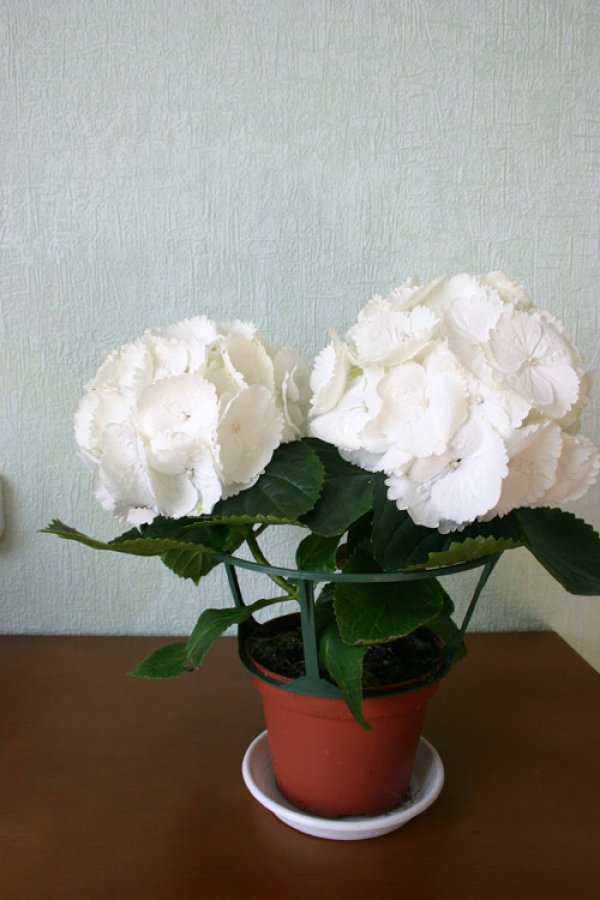

Is it necessary to feed the hydrangea with kalimagnesia in the fall
Kalimag (trade name of kalimagnesia) is a universal three-component drug that contains magnesium, potassium and sulfur. It is used to increase the immunity of flowering perennial plants before wintering and to improve the decorative effect of inflorescences.
Kalimagnesia is often used to fertilize roses. Some gardeners use the drug for the autumn feeding of hydrangeas. Water-soluble components are quickly absorbed by the root system. The plant receives the necessary elements in order to survive the cold and quickly restore vegetation in the spring.
In the fall, fertilizing is applied under each perennial bush in dry or liquid form. To prepare a liquid solution, use 20 g of the drug per 10 liters of water. This amount is enough to fertilize 1 adult bush. In dry form, 20 g of powder is embedded in the soil around the trunk, then watered.
Pruning
The pruning procedure is imperative in order to maintain the attractive appearance of the plant. This procedure will require a well-sharpened knife or pruner. The cut should be sharp and even.
During pruning, weak leaves and stems that have begun to dry or rot are removed. It is also necessary to trim the top of the plant in order to form a more lush crown.
It is ideal to prune twice a year. This is in the fall, when the flowering period has passed, you need to remove the weakened leaves and in the spring, when you need to remove the weakened shoots.
During the flowering period, the pruning procedure is terminated. It begins when the first faded flowers or leaves appear. It is them that need to be removed so that the plants do not rot.
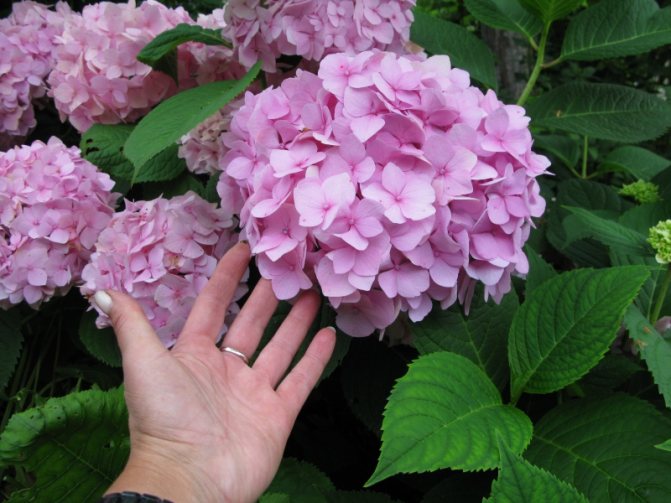

Transplanting hydrangeas in the fall to a new place in the garden
Autumn is the best time to transplant to new areas of the site. Over the winter, the root system will adapt to new conditions, gain a foothold. The best time is the end of September. How is the transplant carried out:
- Leaves and branches are tied into a single bundle, placed vertically.
- A trench is dug in the form of a circle.
- A wheelbarrow is being prepared to transport the bush along with the ground;
- A wooden or metal shield is pushed under the root system.
- The flower is placed together in an earthen lump on a wheelbarrow.
- It is transported to a new location.
The flower bed where the hydrangea is supposed to be planted is also prepared in advance. It is necessary that the flower is out of the ground for a very short time. The earth from the old place is not broken or removed. At the place of transplantation, a composition of fertilizers, mulch is being prepared, which will carry out a natural and not fast feeding of the soil. It is not necessary to untie the branches of the transplanted flower. Better to prepare them for winter shelter. When placing a coma with roots in the soil, special attention is paid to the neck of the root system. It should coincide with the soil level, and not be below or above it. The roots are straightened inside the pit, gently stretched over the prepared recess. After falling asleep with earth, the hydrangea is watered. A large amount of liquid will be required, approximately 3-4 buckets, depending on the size of the plant.
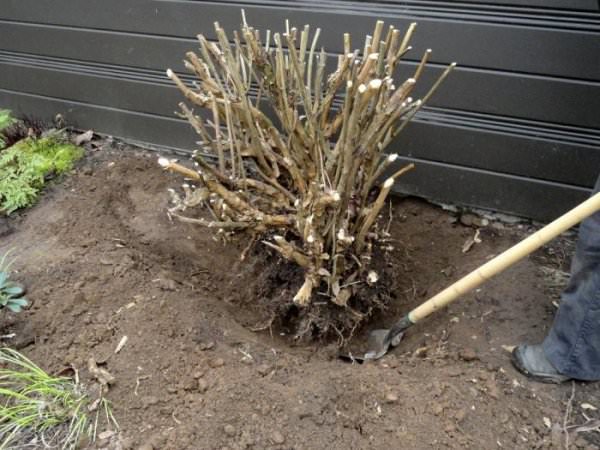

Landing in open ground
Hydrangea is a demanding flower. Therefore, before landing, you need to think carefully about all the nuances.
Site and soil preparation
The landing site must be prepared in advance - about 2 weeks in advance. The soil should be acidic and well moisturized.The acidity can be adjusted independently with the help of special preparations. Depending on the variety, the flowers can grow in partial shade or in the sun. The best place for planting is light partial shade; in a strong shade, the plants will not bloom.
A luxurious bush with large inflorescences is quite common in garden plots. Only about 35 types of hydrangea are classified, 12 of which are common in the natural conditions of our country. Active selection work began more than one and a half hundred years ago. During this time, more than a hundred varieties of hydrangea have been bred, many of which are suitable for home cultivation.
Indoor hydrangea
It is quite easy to grow this flower at home. The plant is unpretentious to lighting, but loves moisture very much. The soil should be acidic enough and also well fertilized. Home hydrangea blooms from early spring to autumn, the umbellate inflorescences can be up to 30 centimeters in diameter.
Most often, the color of the flowers varies from snow-white to bright blue. There is a pink hydrangea, as well as with flowers of an almost burgundy tone. In the warm season, the plant feels good on balconies and verandas, but it needs to be slightly darkened from direct sunlight.
Large-leaved hydrangea
One of the most spectacular garden plants, often found in the southern regions. The height of an adult bush can reach two meters, and the size of the inflorescences is simply enormous. The main secret of successful cultivation is good shelter during the winter.
Flowers appear on last year's branches, so you need to take care of their safety in advance.
Preparing hydrangeas for winter in the fall involves laying branches on the ground and carefully covering them with leaves and plastic wrap. There are special varieties that bloom on new shoots, but their size is noticeably inferior to this garden beauty.
Tree hydrangea
It was this species that received the greatest popularity for cultivation. Bright large inflorescences are formed from individual flowers 1.5-2 centimeters in diameter. The color varies depending on the acidity of the soil and the type of plant. Used in group and single plantings, not only inflorescences are beautiful, but also oval dark green leaves.
In addition to aesthetic beauty, the flowers of this variety smell great and are excellent honey plants. The most famous of these species is the Anabel hydrangea. Large white inflorescences and a noticeable height of up to three meters are considered a characteristic feature of the variety.
Ash hydrangea
The main advantage of such a plant is lush inflorescences with unusual small peduncles. Wide rounded leaves and a rather impressive height of up to two meters make this option very attractive. Flowering lasts from July to the end of August, dried inflorescences serve as an excellent basis for dry bouquets.
Panicle hydrangea
The impressive height is considered a characteristic feature of this variant. The bushes of this plant reach 2.5 meters in height, and some varieties are a tree up to 10 meters with a lush rounded crown. Flowering is also very unusual: the pale greenish pyramidal inflorescences in early summer gradually change color to white, pink and pale purple in late August.
Hydrangea Grandiflora
- one of the most attractive varieties of its kind, with large inflorescences and excellent endurance in our climate.
Other popular varieties include: hydrangea lime light
(bright greenish color of inflorescences),
Phantom
(color varies from pale cream to pale pink) and
Vanilla Fraze
(creamy inflorescences that change color to a pronounced raspberry).
Hydrangea radiant
The unpretentious varieties of this garden beauty are distinguished by unusual silvery leaves with jagged edges. Inflorescences reach 12 centimeters in diameter, which open from early July to late August.The flowering is very lush, while the plant is unusually undemanding to lighting and feeding. If in winter the shoots are frozen, the bush quickly recovers. Landing in sunny places is possible, it tolerates partial shade well.
Petiolate hydrangea
The plant is a treelike vine that grows well under suitable conditions. To do this, she needs partial shade and a fairly reliable support for growth. This variety blooms for quite a long time in small inflorescences with a pale white or greenish color. Often used in landscape design for arbors and decorative arches.
Hydrangea varieties are very numerous and varied. The main value is represented by large inflorescences, the color of which varies from snow-white to deep purple. Depending on the acidity of the soil, flowers can acquire different shades, which is often used by gardeners to create wonderful compositions.
Each of the above types of this garden plant will decorate your site, and in order for the flowering to please with splendor, and the shrub with its longevity, you need to familiarize yourself with the main secrets of successful cultivation.
Other types of hydrangea care in the fall
In early September, leaves are chopped off. They start from the bottom of the branches. Shoots without foliage begin to thicken - "woody". After the first frost, the remaining wilted leaves are also removed. You can only leave those that cover the buds of the peduncles.
We also recommend reading:
Watering rules
Hydrangea loves moisture. It supplies itself with water by keeping it in the stems. If you water the flower at the onset of cold weather, the bush will become oversaturated with water. Excess moisture will end in cracks and chips on the stems and branches. That is why, with the onset of autumn, watering is stopped. You should not be afraid that the flowers will not have enough moisture. They take care of themselves, creating water balance inside. Autumn in most of Russia is a time of rains and winds. Flowers should be protected from natural moisture. What activities are advised to hold:
- build a frame;
- stretch the film covering;
- ditch the bush with narrow ditches to drain the water.
All of these devices can be used in winter for sheltering and positioning fertilizer.
In dry autumn periods, gardeners create a special liquid irrigation solution: they take 15-16 g of monophosphate and superphosphate, dilute them in 10 liters of water and pour it over the bush. Such watering will become both moisture saturation and top dressing before winter. The action involves only a single watering session.
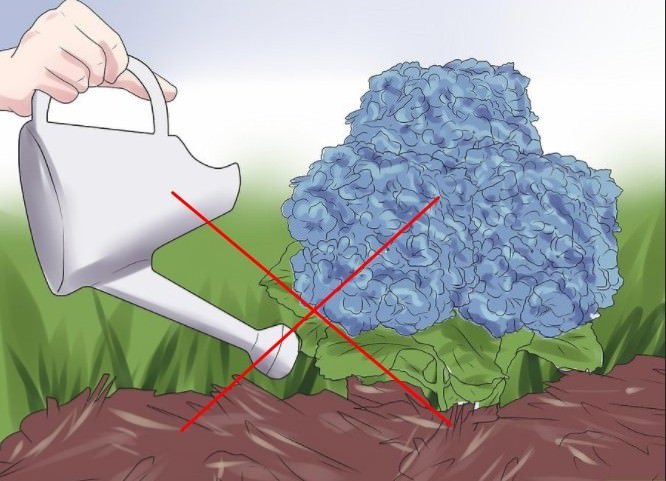

Timing and technology of autumn pruning hydrangea
The bush becomes neglected without cutting. It loses its beauty and splendor of buds. Pruning is done in front of the shelter. Circumcision depends on the type, variety of hydrangea:
- Tree View - Short Pruning.
- Large-leaved - sanitary pruning.
How to choose a hydrangea in the store
It is believed that it is better to purchase a flower in specialized stores.
The first step is to look at the stem. It should be dense, elastic, and have an expensive green color. There should be no brown or yellow formations on the leaves. They should be juicy and bright green. If hydrangea leaves are lethargic, dry at the edges, or have white or yellow spots on them, you should refuse to buy.
Take a close look at the flower hat. It should be dense, saturated with bright colors. If the cap is pale, and the flowers begin to fall with a light touch, it means that the plants have received less nutrients.
There is one general rule to apply when choosing a flower - it should look healthy, nourished and hydrated.
Requirement for soil when growing a plant
Soil parameters for hydrangeas are of great importance, since if they are not suitable, no feeding can save the plant. It will not bloom and will gradually wither away.
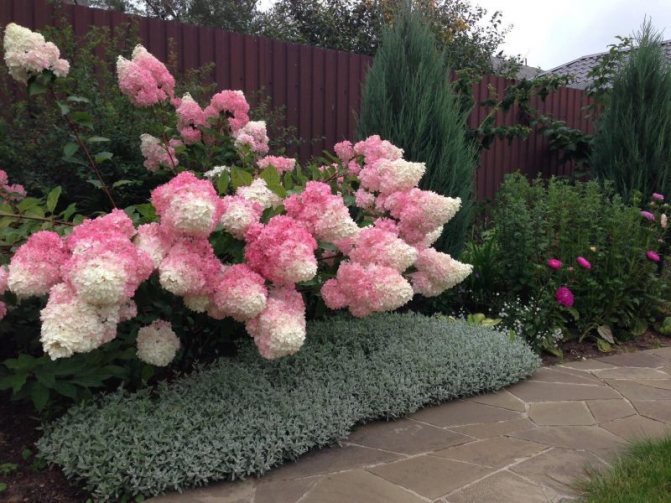

For a shrub to feel good, it needs loose soil that has a high percentage of water permeability and air permeability. The plant prefers soil with high acidity. If this indicator is not taken into account, then the bush will begin to suffer from iron deficiency, which will lead to a general deterioration in the condition of the hydrangea and an almost complete absence of flowering.
Dormant period
The dormant period for hydrangea begins in the cold season. As a rule, in autumn frosts. Plants hibernate, consume less moisture and stop blooming. To give the plant to gain strength before the next season, it must be placed in a room with a temperature of no more than 10 degrees. Do not forget about watering as the earth dries up.
Hydrangea will resume its vitality in late March - early April, when the sun begins to actively warm up.
What feeding are needed for hydrangeas in the fall
Autumn feeding of hydrangeas, like other shrubs and trees, has several goals:
- nourish a depleted plant, prepare it for future flowering;
- strengthen the root system, help the plant overwinter;
- foliar feeding and spraying will protect against pests and diseases.
For this, several different, most popular mixtures are used that have a beneficial effect on the bushes.
Potassium-phosphorus
A must for panicle hydrangeas. Potassium effectively strengthens the root system, protects against cold. It is able to reduce the temperature at which the water inside plants begins to freeze.
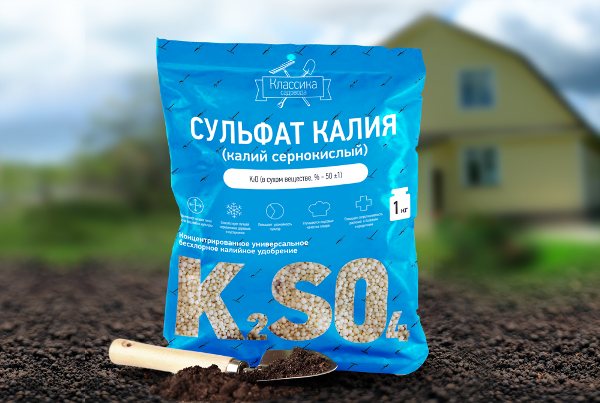

Fertilizer potassium sulfate
Phosphorus has a beneficial effect on the immune system of the bush, increases resistance to typical diseases affecting flower plants. These elements increase bud formation, ensuring abundant flowering and young shoots the next year. Superphosphates and potassium sulfate are best suited for this purpose. 1 tablespoon of fertilizer is diluted in 10 liters of warm water, 7 liters of solution are added under each bush.
Organic fertilizers
Any means from organic matter is suitable - rotted manure, compost, peat. They are laid out around the bush, while mulching the soil with them. Embedding in the ground is not required, since they will well protect the roots from winter frosts, and in the spring, after decomposing under the snow, they will saturate the ground with the necessary nitrogen.
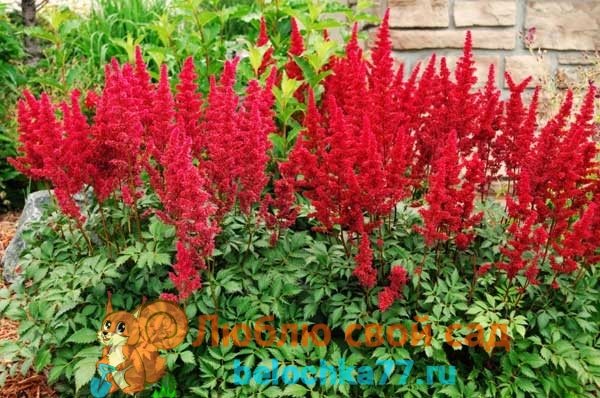

Feeding hydrangeas with rotted manureNitrogen-containing fertilizing (including fresh manure and slurry) must not be applied in the fall! They will contribute to the rapid formation of buds and young shoots, which will surely die in the winter, causing irreparable harm to the plant.
Mineral dressing
You need to work with minerals very carefully - their excess is more likely to harm the hydrangea bushes than help. To maintain the acidity of the soil, it is necessary to add iron in the form of a solution of ferrous sulfate, but it is better to do this during the growing season. To maintain acidity, citric or oxalic acid (1 teaspoon per 10 liters of water) or an infusion of nettle with sorrel will help.
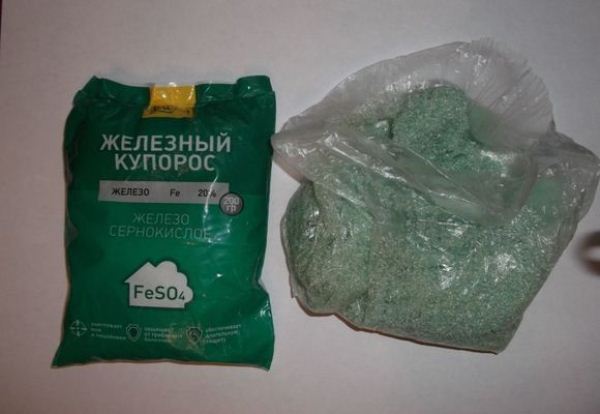

Iron vitriol It is necessary to water hydrangeas exclusively with settled water or rain, so as not to disturb the acidic environment.
Reproduction of hydrangea
There are two ways to propagate hydrangeas: by seed and cuttings.
With seed, it is necessary to sow them in the fall. Then do the following:
- Prepare the soil. To do this, you need to mix leaf and peat soil with sand (4: 2: 1).
- Place the seed in the substrate, sprinkle the soil on top and moisten.
- Cover the pot with plastic wrap. Sometimes it is necessary to remove it - this allows the ground to ventilate.
- The temperature must be between +14 ° C ... + 20 ° C.
- When sprouts appear, you can remove the film.
- When two or three true leaves will grow, it must be transplanted to another place.
Cuttings occur in winter. In this case, you need:
- Make several cuttings and cut them with Kornevin.
- Plant in moist peaty-sandy soil. To a depth of about 3 cm.
- Cover with something (for example, a film). You should get a mini greenhouse.
- Make sure that the temperature is about +20 ° C and the humidity is about 80%.
- From time to time, airing and spraying the plant should be carried out.
- When the roots appear (this takes about a month), the seedlings must be transplanted into other pots.
Some people use another method - layering.
To propagate it like this requires a huge, spacious pot. The process itself is as follows:
- The largest branch is selected.
- It is slightly incised and bent to the soil, while sprinkling it with earth on top.
- The soil is kept moist.
Thus, the shoot will have roots. After that, it is separated and placed in a separate pot.
Shelter hydrangea for the winter
What hydrangeas require shelter
As for the question of whether to cover the hydrangea on the eve of winter, the answer to it depends on factors such as:
- climatic conditions of the region;
- type and variety of hydrangea;
- air humidity.
More than others, a large-leaved hydrangea needs shelter for the winter, which does not have high cold resistance: even with careful and conscientious wrapping, you can still find several frozen shoots on the plant in early spring.
Treelike hydrangea is more frost-resistant: under light cover and under snow, it can withstand cold temperatures down to -25 ˚C. The most frost-resistant is the panicle hydrangea, which hibernates in the middle lane without shelter. How to prepare these types of hydrangeas for winter? Insulate the near-stem circle of plants with a thick layer of dry leaves, and, if possible, bend the tree hydrangea to the ground. Even if some shoots of these plant species freeze in winter, hydrangeas will quickly recover after spring pruning.
Features of care depending on the type of hydrangea
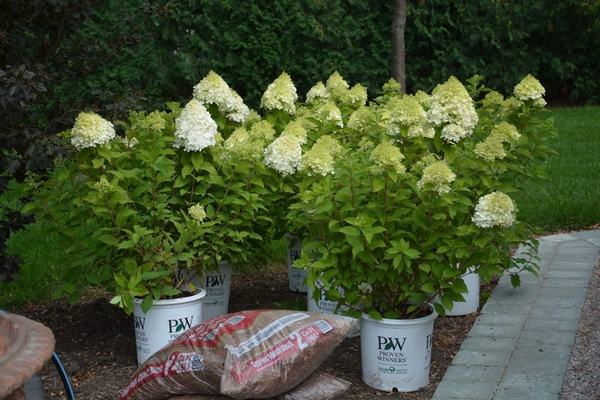

Different types of hydrangeas survive the cold in different ways, so varietal characteristics must be taken into account when preparing plants for winter. The most resistant to low temperatures is the panicle hydrangea. It tolerates frosts down to -35 degrees, so it can be grown even in northern regions with long cold winters. The tree-like type of flower is recognized as medium in frost resistance; it is grown in the middle zone of the country. However, in a cold winter, in the absence of shelter, young shoots can freeze slightly. If they are carefully looked after in the spring, they will quickly recover. Large-leaved hydrangea is considered the most sensitive to cold weather. Flowering in this perennial occurs on last year's shoots, and when they freeze, buds are not formed.
You need to cover each type of hydrangea like this:
- it will be good enough to shed a tree-like tree before winter, then mulch the area of the near-trunk circle with a thin layer of peat. If winter in the region does not last long, and the temperature does not drop below - 20 degrees, then it is not necessary to mulch an adult shrub, it will normally survive frosts;
- the paniculate variety is huddled in the fall: they shovel the earth on the stem from all sides. This will protect the roots from cold weather;
- large-leaved hydrangea needs careful shelter because of its thermophilicity. In addition to mulching and hilling, the bush itself is covered with agrofibre or any material that retains heat.
On a note!
There is no need to rush to open the large-leaved hydrangea after wintering. They are waiting for the outside temperature to finally settle in the positive range, and there will be no threat of frost, only then it is possible to get rid of the shelter.
Winter watering hydrangea
If you think that with the onset of autumn you need to stop watering the hydrangea, then you are mistaken: before a steady cold snap, its root system must absorb the maximum amount of moisture and nutrients. The plant spent a lot of energy on flowering, and it weakened, especially if the flowering was abundant, so the hydrangea needs to restore the water and nutritional balance.
Watering is especially important if it is dry autumn, because hydrangea is one of the most moisture-loving shrubs. Always keep the soil in the near-trunk circle in a slightly damp state and at the same time monitor the readings of the thermometer: as soon as the temperature at night drops below 5 ˚C, the water consumption when watering the hydrangea should be reduced, and when the thermometer shows 0 ˚C at night, soil moisture in the hydrangea is stopped in the near-trunk circle.
Features of growing and care
Grow indoor hydrangea should be in a spacious, bright place, which must be protected from direct sunlight. The most comfortable temperature required for its proper growth and development is 20 degrees. Drafts and sudden temperature changes should not be allowed.
During the dormant period, which begins immediately after flowering, the plant should be moved to a dark, cool place with a temperature of + 7-10 degrees and left there until the buds begin to wake up in February, after which it is returned to its usual conditions. Thanks to wintering in a dark room, the hydrangea well restores the strength that was spent on flowering, and if this requirement is not observed, the next flowering occurs only after a year.
Planting garden hydrangeas and care have their own characteristics. To admire the beautiful and lush flowering, we will learn how to properly care for this plant.
Fertilization timing
It is not worth delaying with top dressing in the winter - the latter is carried out in early September, and the early varieties are fertilized for the last time at the end of August. At least a month should pass before the onset of the first frost. Nutrient mixtures are applied during the formation of new buds for future flowering, then watering is reduced. After the autumn pruning, no top dressing is applied.
[collapse]
Care and transplant after purchase
It is not recommended to transplant the hydrangea immediately after purchase. The plant must get used to new conditions. Give her 2 weeks to 1 month to adapt.
In the future, the transplant procedure should be carried out at least once every 3-4 years.
If you transplant into larger pots annually, you can achieve the most lush bloom a hydrangea can produce. The roots of the plant grow in breadth, so the volume of the pot must match.
Choose a pot that is slightly larger than the diameter of the one in which you purchased the flower.
While the plant is adapting, you can gradually acquire the ingredients for the substrate. You will need 1 part of sand, two parts of peat, two parts of deciduous land, and 4 parts of turf land. All this is mixed and poured into the pot.
Do not forget that in the early stages of life in a new hydrangea room, additional care in the form of feeding will be required. It is better to buy a mineral fertilizer designed specifically for indoor flowering plants. You can buy it in a specialized store. It is important not to overdo it here, so dilute the dressing in accordance with the instructions and water the flower in the amount indicated on the package.
Hydrangea does not like direct sunlight, but loves warmth and diffused light. Therefore, it is better to place it on a shaded window.
As soon as the hydrangea gets stronger, you can take care of it and carry out a transplant.
At first after the purchase, namely, the first two weeks, it is better not to pour the plant. It is necessary to moisten the soil as it dries. But it is highly recommended to spray leaves and flowers from a spray bottle. This procedure needs to be done every two days.
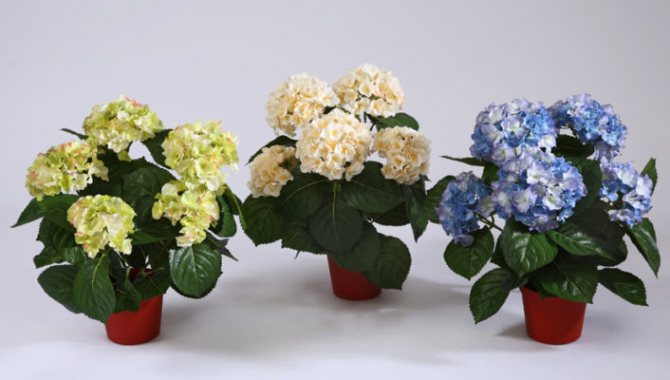

How to process hydrangea after pruning and feeding
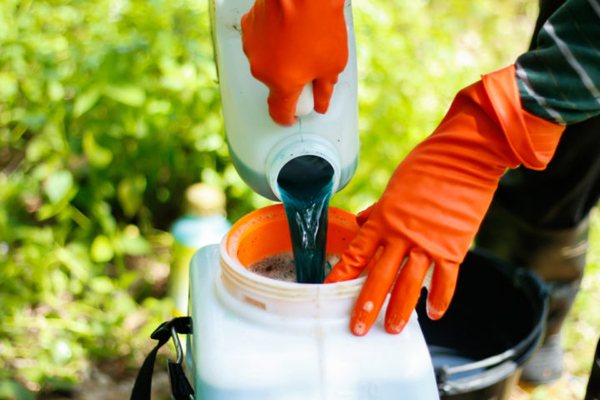

Before the arrival of negative temperatures, the soil under the hydrangea should always be moist, this will allow the roots to better endure the subsequent wintering. Watering the shrub is excluded only if it is rainy autumn. Closer to the onset of frost, the bush is cleared of old, sick, damaged shoots.The overgrown branches are shortened.
Radical pruning is shown only for tree hydrangea. The paniculate variety is pruned moderately, and the shoots of the large-leaved hydrangea are shortened very slightly. Old, non-flowering branches are cut out in an amount of no more than 2-3 pieces at a time, so as not to greatly weaken the plant. You will always have the opportunity to correct the shape of the bush in early spring.
Sections of shoots are treated with Bordeaux ointment, oil paint, melted wax. The simplest option involves the use of crushed activated carbon. Before covering the bush, it is necessary to carry out preventive treatment against diseases and pests. To do this, use 1% Bordeaux liquid. The whole bush is sprayed with the solution, not sparing. The rest of the product is poured onto the ground to destroy the pests hidden in the upper layer of the soil.
Autumn processing can be considered preventive, it is carried out after leaf fall. For spraying, the popular drug Abiga-Peak is also often used, the active ingredient of which is copper oxychloride. By its properties, this agent belongs to contact fungicides. It is effective against powdery mildew, spotting, fusarium, moniliosis and other fungal diseases.
Winter manipulation
In winter, when in rest mode, the hydrangea should be disturbed to a minimum and as much as possible to reduce all kinds of manipulations for care and maintenance.
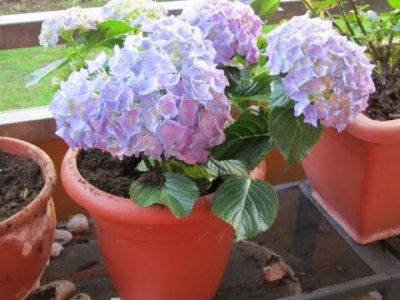

- if the plant is kept in an apartment, it needs to provide a cool temperature regime, rare moisture (as the soil surface dries).
- if the pot is moved to the basement, it is not necessary to touch it at all during the entire hibernation period.
The procedures important for this plant - transplantation and pruning - are not carried out in winter. Separate time should be given to them in the fall or spring.
- during autumn pruning, only a few of the strongest shoots are left. Partial pruning (in order to remove weak shoots) is also carried out in the spring, after the plant wakes up;
- transplanting is best done in the fall, after flowering. Young plants are transplanted every year, old ones every 2-3 years.
Transplant in the fall
In autumn, in September, planting or transplanting of a garden hydrangea is often carried out. It is better to plan a large-leaved transplant in the spring, but for tree-like and paniculate plants, autumn will be just as favorable, especially in warm climates.
Prepare for planting or transplanting in the spring. To do this, a trench is dug around the base of the flower, filled with compost and watered. When the time comes, the plant is dug on the outside of the trench, removed and planted in a pre-prepared hole with a nutrient mixture. The transplanted flower is fertilized and hides very well for the winter, the radical pruning described above is carried out, but after the transplant itself. Proper autumn care for decorative hydrangea includes full watering with a warm solution with a nutrient mixture until the very first frosts.
Propagation of hydrangea in autumn
In August-September, you can increase your collection of flowers in the garden. It is optimal to propagate the hydrangea at this time by layering or dividing.
- In the spring, loosen the ground around the selected bush and make small depressions in the soil, lay side shoots in them, sprinkle with earth and water every day. In early to mid-autumn, the seedlings should reach about 0.5 m, then they need to be dug out and the shoots are separated from each other.
- Dividing a bush requires first watering it abundantly, pulling it out of the ground and rinsing the roots. Already divided parts are planted in individual places in the ground. This is the easiest way, but when using it, the gardener must be careful with the root system so as not to damage it.
If this is a decorative panicle hydrangea, care in the fall should be especially careful, because the flower is very fragile and extremely picky about soil and heat.
Tips from seasoned gardeners
Flower buds for the next season begin to form in late summer and early autumn. Early flowering varieties must be fed during this period. Late varieties are fertilized 2 weeks later, before pruning.
Important! After pruning, the plants are dormant, and it is no longer possible to feed them at this time.
By experimenting, you can achieve a change in the shade of the inflorescences:
- regular application of 5 g of alum, diluted in 1 liter of warm water, will change the pink color of the buds to blue;
- a mixture of 70 g of potassium sulfate and 80 g of potassium chloride, combined in a bucket with peat and distributed in the form of mulch near the stems of hydrangea, will color the caps blue;
- potassium permanganate solution, "Flower" and "Agricola-7" preparations will enhance the pink color;
- the combination of loamy peat with river sand will allow you to get a white color of the caps.
Experienced gardeners do not recommend using preparations containing ash or lime. They reduce the acidity of the soil, which negatively affects the splendor of flowering and the appearance of ornamental plants.
Attention! It is recommended to fertilize plants in the first year. The procedure is important to carry out annually.
Disease prevention
It is necessary to take care of the hydrangea in the fall while simultaneously applying preventive measures against diseases and pests that threaten the flower. For this, preventive treatment of the bark and soil of the trunk circle is carried out. This is done after the first leaf falls. There are many suitable drugs for this, for example Topaz, Iskra, Fitosporin.
The most common problems in the care of this flower are chlorosis, rust and insects. In order to avoid their appearance, it is required to monitor the percentage of acidity in the soil, do not fill in and do not forget about watering the plant.
Helpful information
View other materials on caring for room hydrangea:
If you find an error, please select a piece of text and press Ctrl + Enter.
Many people know how to care for hydrangea in summer, but how to do it correctly in winter?
This article talks about preparing a room hydrangea for winter period so that in the future to achieve a lush and long-term seasonal flowering.
First, let's outline the main stages of winter care:
- pruning a plant;
- transfer;
- creating the best conditions for a rest period.
Indoor hydrangea - a small flowering bush. Originally named after Princess Hortense. Later it was renamed by European botanists to Hydrangea, which in Greek means "a vessel with water". This name reflects the main feature of the flower - moisture-loving.
There are about 80 plant species, but in indoor floriculture it is mainly used large-leaved hydrangea. It is known as the most thermophilic plant species.
A unique distinguishing feature of this flower is the color variation depending on acidity and presence of aluminum salts in the soil in which it is planted. So, in neutral or slightly acidic soil, the flowers will acquire a pink or white color, and in acidic and rich in aluminum salts - blue or lilac.
Hydrangea flowers will delight you with their splendor for a long time, but only with careful and proper care for the winter.
Difficulties in growing hydrangeas
Leaves dry
If the hydrangea leaves dry, it means that it lacks moisture. Give preference to watering with a spray bottle, which should be done daily. Also, do not forget about airing the room.
Watering should be carried out as the earth dries up. Run a humidifier near the hydrangea for a few hours.


Leaves fall
If leaves fall, then, unfortunately, this is also evidence of improper care.Fall from dryness indicates a lack of moisture and the proper amount of nutrients.
If the leaves just wither and fall, it is most likely that the hydrangea lacks sunlight and warmth. Therefore, raise the room temperature to the desired level.
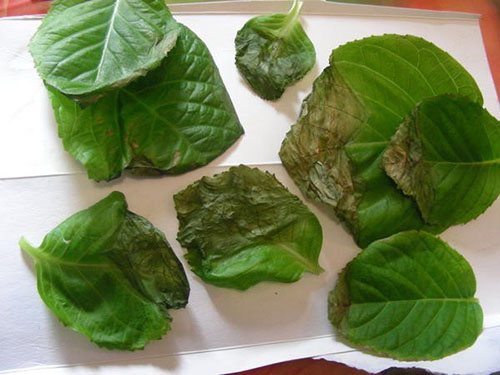

What to do if the hydrangea wilted
If the hydrangea has wilted by 40%, you can try to reanimate it. To do this, it is watered with water, in the composition with potassium permanganate. Additionally, copper sulfate and other top dressing are bred, which are poured into the soil.
If it was not possible to rehabilitate the hydrangea, you should say goodbye to it. And the mistress needs to analyze what caused the plant to wither so quickly.
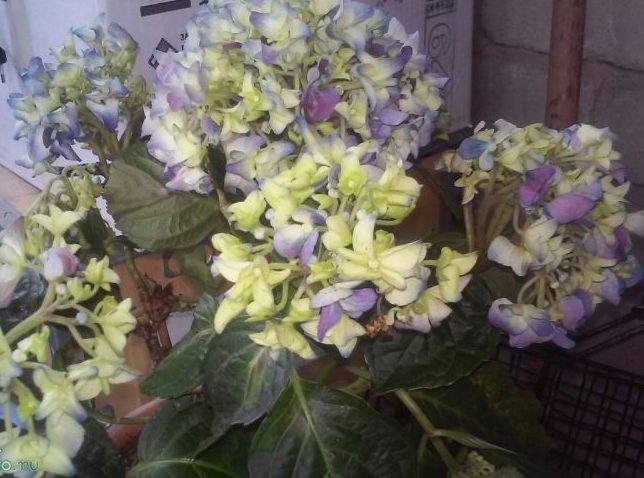

Hydrangea does not bloom, what to do
The plant will bloom if the following conditions are met.
- When the rest period ended.
- Was properly prepared for winter.
- Receives the proper amount of nutrition and feeding.
- All diseases of the flower were removed.
If you missed any of these points, then, most likely, this is why the hydrangea does not bloom. However, the reason may lie in completely different factors. For example, the roots were damaged during transplantation. The plant directs all forces to restore their integral structure and not wither. Therefore, flowering is temporarily postponed.
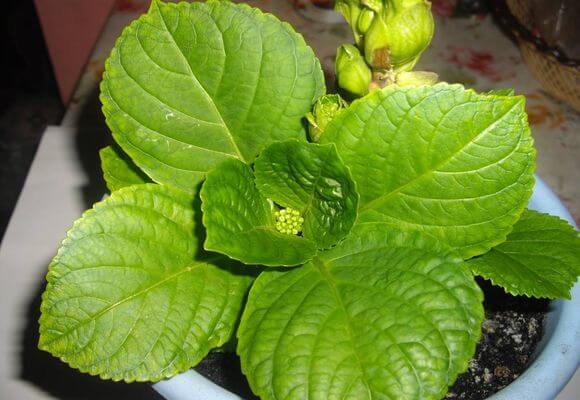

Many people call hydrangea a capricious plant. Indeed, to care for it, you need to very correctly select the necessary standards for temperature and humidity indicators. However, a hostess who is not afraid to mess with hydrangea and is ready to care for it both in summer and winter can decorate her house with an incredible color that will delight you all spring, summer and autumn.
Did you like the article? Was she helpful?
Features of autumn pruning hydrangea
Many lovers of this wonderful flower often have questions about this procedure: when is it better to cut - in autumn or spring; and is it necessary to prune the hydrangea at all for the winter? It is worth dealing with these issues in more detail. In addition, if this procedure is carried out incorrectly, then the shrubs can bloom poorly and, in principle, leave the gardener without their beautiful flowers throughout the season.
By the way! About others reasons why hydrangea may not bloom, You can find out from this detailed material.
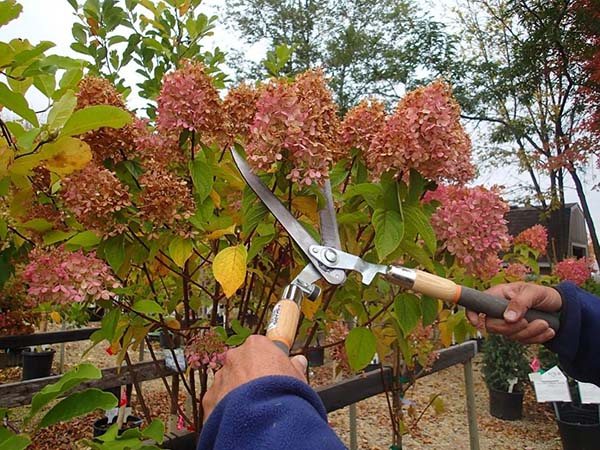

Note! Details about pruning hydrangeas in the fall you can read in this detailed article.
Do I need to trim for the winter
In the fall, it is imperative to remove all faded (dry) inflorescences, otherwise in winter hydrangea bushes can simply break under the weight of snow. And also does not interfere with sanitary and thinning pruning.


When is the best time to prune - in autumn or spring
It is believed that paniculate and tree-like hydrangeas can be pruned both in autumn and spring, or pruned in several stages (some should be cut off in autumn, and already started in spring). But the large-leaved variety, as a rule, is tried to be cut only in the spring. Pruning of young bushes 2-3 years old (which still have thin stems) is most often also left in the spring.
Important! Learn more about spring hydrangea pruning read here, about autumn - here.
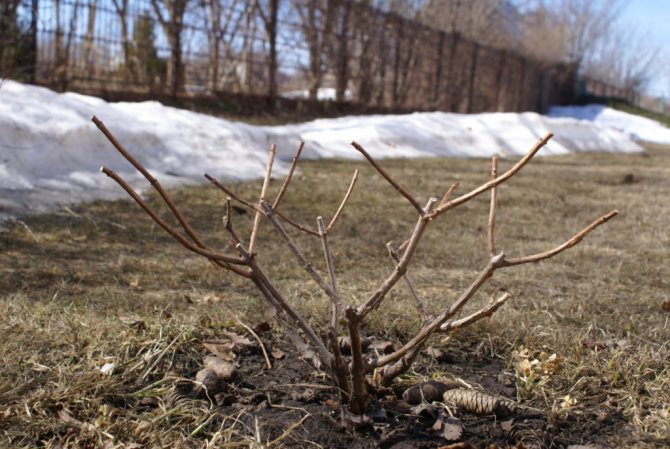

Features of autumn pruning of a plant, depending on the species
Let's consider separately how tree-like, paniculate and large-leaved varieties are pruned, since each of them has its own characteristics.
Note! Detailed information about pruning paniculate, tree-like and large-leaved hydrangeas in the fall
You can find out
from this detailed article.
Pruning paniculate variety
As a rule, in autumn at panicle hydrangea cut off only faded inflorescences, and already in the spring they carry out a complete (final) pruning, that is, pruning is carried out in 2 stages.
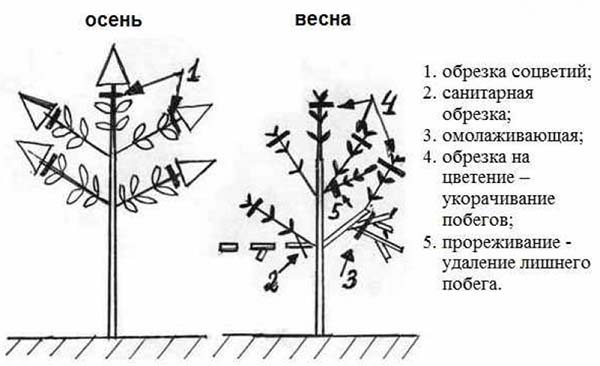

However, the flowering of paniculate, like a tree-like hydrangea occurs on the shoots of the current year, which means that it is not at all scary to make a mistake when pruning. therefore in the fall, you can carry out a complete pruning of the tree hydrangeabut leaving some margin. For example, when pruning for flowering, 3-4 pairs of strong buds should be left.
Change the color of the hydrangea
Not all hydrangea owners are happy with its color. You might not know, but it's easy to change.
- Make the soil more alkaline. Then, along with a blue or white shade, bright pink flowers will appear.
- If you make the soil more acidic or regularly water the plants with water with the addition of a few drops of lemon juice, you can achieve a blue tint.
- If the soil is in a normal state, and the plant is regularly watered with water with the addition of a small amount of potassium permanganate, then the hydrangea will acquire a white tint.
Watering rules
Hydrangeas are very moisture-loving, therefore, even in autumn, the ground under them must be kept moist. If natural precipitation does not fall and the weather is warm, dry, then the bushes are watered about once every 5-7 days, spending about 15-20 liters of water for each. If there is an excessive amount of liquid falling from the sky, the planting should be covered with plastic wrap (to avoid waterlogging). When the air cools down to + 6… + 8 ° C at night, the plants are humidified less and less often. Watering is completely stopped when the temperature drops to 0 ° C.
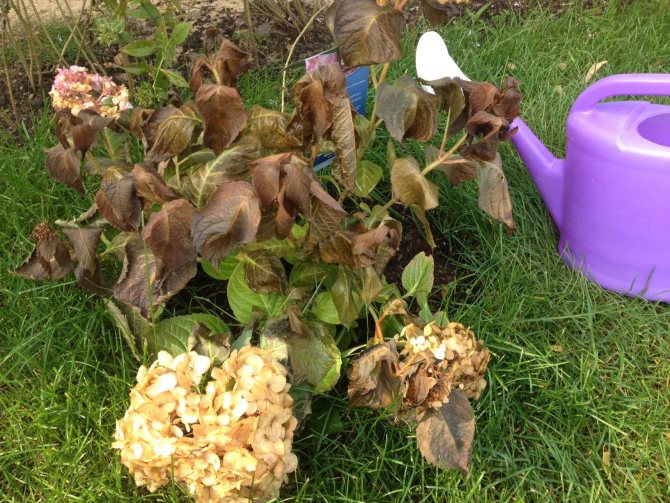

Even in autumn, hydrangea needs to be watered if the weather is dry.
For hydrangeas, it is not customary to carry out pre-winter water-charging irrigation, because the shoots will absorb excess liquid, which, when frozen, will increase in volume and tear the stem from the inside.
Photo
See more photos below:
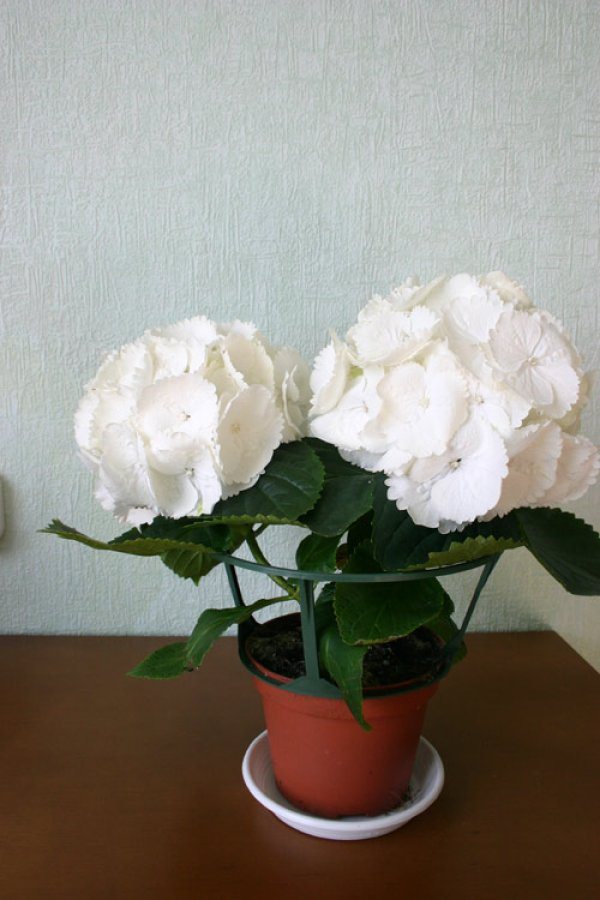

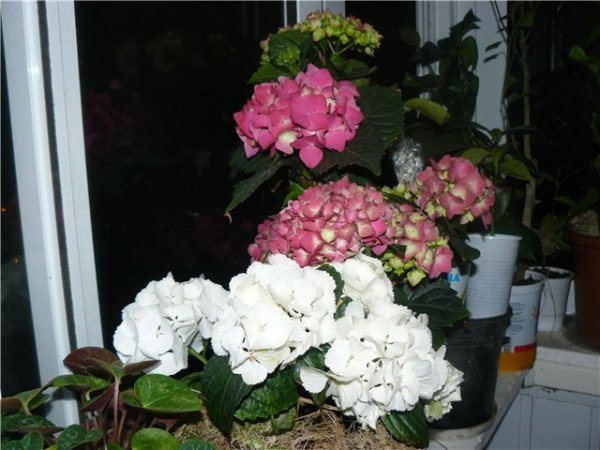

Secrets of care and preparation for cold weather
Panicle hydrangea is one of the most frost-resistant varieties, it can withstand frosts down to -30-35 C. It only covers the trunk circle with a layer of mulch to protect the root system from freezing.
A tree-like variety is less resistant to frost, in which young shoots can freeze during the cold season. But the plant recovers quickly over the next season.
And the most unstable to cold weather is the large-leaved variety. It is not sheltered for the winter only in the southern regions of our country, and on the territory of colder regions, this shrub needs a full-fledged shelter during cold weather.
All varieties and varieties of this perennial, regardless of their frost resistance, must be prepared for winter in advance. And the conversation about preparing this perennial for the cold should begin with a story about the autumn pruning of hydrangea.
Treatment of the root zone of the bush
Preparation of hydrangea bushes begins with cleaning the area... In the root zone, you need to put things in order by collecting all plant debris (fallen petals and foliage, sticks, twigs, etc.). During the entire time remaining until winter, plantings must be regularly weeded out, removing weeds. The soil under the bushes is periodically dug shallowly (3-5 cm) or loosened (after watering it is necessary), breaking the earthen crust and improving the aeration of the root system. Then a layer of mulch of 5–6 cm is laid from mowed grass, humus, pine needles, cones, sawdust, etc.
All collected plant residues must be burned, since spores of fungal diseases remain on them, and insect pests are often settled for the winter.
Wintering
Indoor hydrangea in the fall does not need such preparation for winter as a flower in the country or in an outdoor garden.
It is required to prepare the plant - gradually stop watering a couple of weeks before the cold snap, feed and care for the hydrangea according to the autumn method from the beginning of the season.
Large-leaved hydrangea in early autumn requires special preparation for wintering. Paniculate varieties such as Vanilla Freise or Weems Red and tree varieties such as Annabelle or Grandiflora can survive with mulch alone.
Care for hydrangea paniculata in autumn can include several basic shelter methods:
- The simplest (but also the least effective) is the leaves. To create such a roof, the branches are fixed closer to the ground with ropes or wire pins, sprinkled with foliage, covered with any cloth and fastened with stones or stakes.
- Repeat the first method, but use spruce branches instead of foliage and cover the soil under the branches with it.
- The most reliable option would be to create a full-fledged frame with fiberboard, or made from wire - it did not bend strong enough. It is also worth sprinkling the base of the bush with dry earth and covering the frame with a waterproof material, leaving holes for ventilation. After the first snowfalls, they close.
- Small plants can be covered with peat and covered with foil.
- You can also repeat the first or second method, but cover them on top with a sheet of old iron instead of a simple cloth.
Preparation begins with proper landing
If you are just going to get a hydrangea in your garden, then it is important to choose the right place for planting it. It will depend on this how the plant will endure winters and delight you in the season with rapid flowering. These garden flowers do not like drafts and dampness. Slightly acidified soil is ideal. Consisting of the top layer of peat, pine litter and leaf humus.
How to determine the acidity of the soil
Well, if you got a garden with an already growing hydrangea, then the above mixture can replace the ground of the trunk circle. The soil must be removed carefully. So as not to damage the roots of plants. If you are afraid to do this, just cover the trunk circle with an earthen mixture.
In order not to change the structure of the soil, you need to water the garden hydrangea with water with a minimum lime content. Rainwater is ideal. If it is not possible to collect it, then you can water it with tap water. But it must first be defended.
Hydrangea, whose care and preparation for winter begins at the time of spring awakening, needs pruning. Examine the bushes and cut off all the frozen parts from them. Look at the shoots. Delete those that are irregular or thin. Don't be afraid to shorten the bush. This procedure will benefit the plant and promote abundant flowering.
Pruning hydrangeas in the fall is a necessary stage in preparing this plant for the winter cold. Many gardeners prune in the fall. At this time of the year, it is preferable to spring pruning. If the plant has not been pruned for a long time, then it is not advisable to prune the entire bush at once. This must be done in 2-3 seasons.
In the large-leaved hydrangea, flower caps and zero shoots are removed in autumn. In a tree-like variety of this flowering shrub, shoots are cut into 2-4 buds. Weak shoots should be shortened by a third. The panicle hydrangea is cleaned of panicles and sanitary pruning is carried out. Don't be afraid to shrink the bush. He will only benefit from this and will delight you in the summer.
Hydrangea in autumn preparing for winter - pruning
Hydrangea preferences
To decide what to feed the hydrangea and how to care for it, you need to know what it loves, what soil it prefers, what elements it needs for growth and abundant flowering.
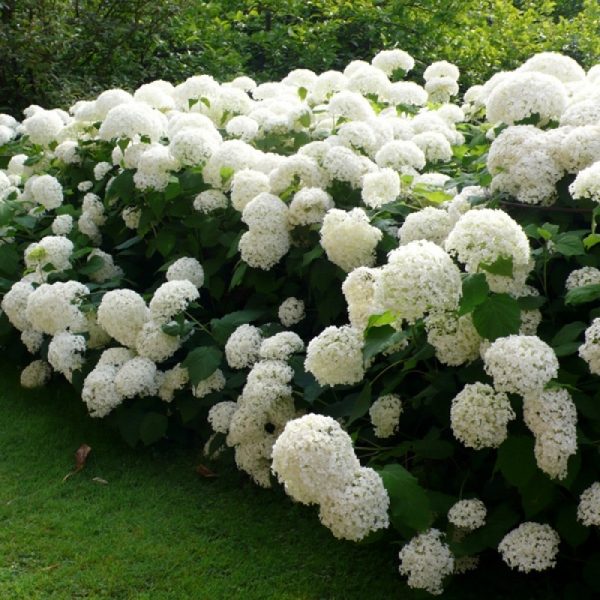

Hydrangea will become a decoration of the personal plot
Hydrangea is one of the few plants that prefers acidic soil, a lot of moisture and slightly shaded areas. The abundance of the sun and direct rays oppress her: the flowers become smaller. Any top dressing made under the bushes must maintain the acidity of the soil. In no case should lime be added - it extinguishes acidity, the bush can get chlorosis, the leaves turn yellow and the ornamental plant will lose its attractive appearance.
When to fertilize hydrangeas in autumn
The optimal period for making autumn dressings is the end of August and the beginning of September, when the hydrangea has already faded and the growth of new shoots has stopped. At this time, the root system actively absorbs nutrients from the soil, trying to create a supply of moisture and necessary elements.
Gardeners strive to feed the hydrangea in the fall so that its stems have time to be covered with a dense layer of bark before the onset of cold weather. The timing of fertilizing hydrangeas with fertilizers in the fall depends on the climatic conditions and the region of growth. Top dressing usually coincides with the beginning of leaf fall and is carried out no later than a month before the onset of frost. The last time fertilizers are applied during the period of shrubs warming.
How to fertilize garden hydrangea in autumn
Autumn feeding of hydrangeas should help the plant to retire in good shape, lay vegetative buds for the next growing season. During this period, nitrogen fertilizers are not used to stimulate the growth of green mass. But the potassium-phosphorus group of fertilizers will benefit the plant.
Mineral dressing
Potash fertilizers applied in the fall will give hydrangeas more lush bloom next season. Potassium will strengthen the root system and help the plant to winter safely. A tablespoon of potassium sulfate is diluted in 10 liters of water at the rate of 7 liters of solution per adult bush.
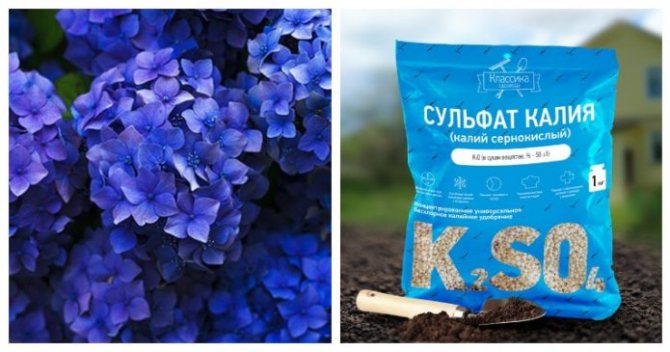

Fertilizing with potassium sulfate will help the plant overwinter
The same dose is added to the potassium solution, i.e. 1 tablespoon in 10 liters of water, superphosphate.
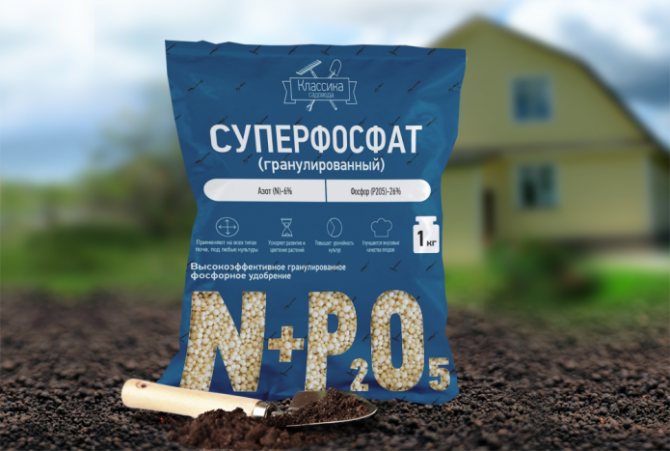

Superphosphate is also necessary for hydrangeas in the fall.
Instead of watering with a potassium-phosphorus solution, dry top dressing can be carried out, for which, in mid-September, granules are scattered in the near-stem circle at the rate of 2 handfuls per adult bush. Then the granules are well mixed with the soil, making sure that they are not directly at the base of the bush to avoid burns.
Organic
In the fall, organic feeding of hydrangeas is necessary in any of its manifestations:
An organic layer spread around the bush will protect the root system and prevent severe soil freezing. This layer will decompose slowly, and nutrients will gradually flow to the roots of the plant. The soil, as a result of fertilization with peat and coniferous litter, will increase the acidity, which is necessary for hydrangeas.
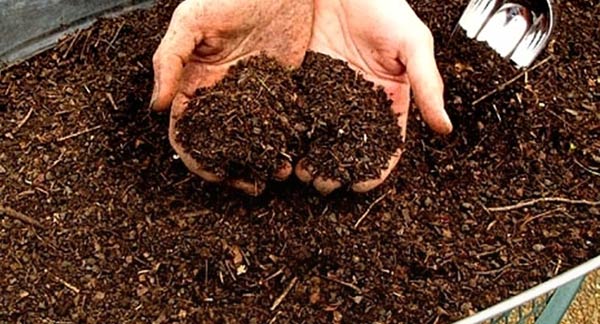

In the fall, you need to arrange a peat pillow around the hydrangea bush.
Hydrangeas tolerate a lack of organic matter better than an excess of it.
Folk remedies
In the fall, hydrangeas can be fed with a weak solution of potassium permanganate. In spring, the shoots will have a denser structure and fall apart less to the sides.
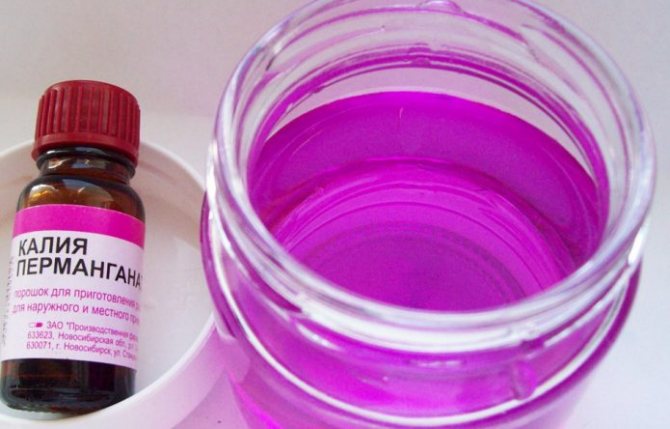

Watering with a weak solution of potassium permanganate will give the stems greater elasticity
From folk remedies, I would also like to mention sour milk and its varieties: yogurt and whey... This is not really an autumn top dressing, but it is very useful for hydrangeas. Serum is recommended to carry out periodic spraying of the plant on the leaves. The effect will be positive.
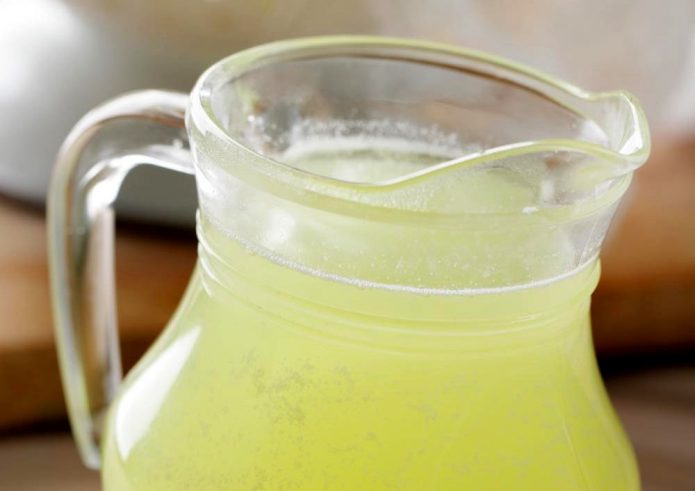

Hydrangea will be grateful for occasional sprays of milk whey
I myself, having my own cow on the farm, periodically give my hydrangeas milk supplements: I water it under the root with water with the addition of sour milk or spray it with whey on the leaves. The beneficial lactobacilli are popular with hydrangeas.


